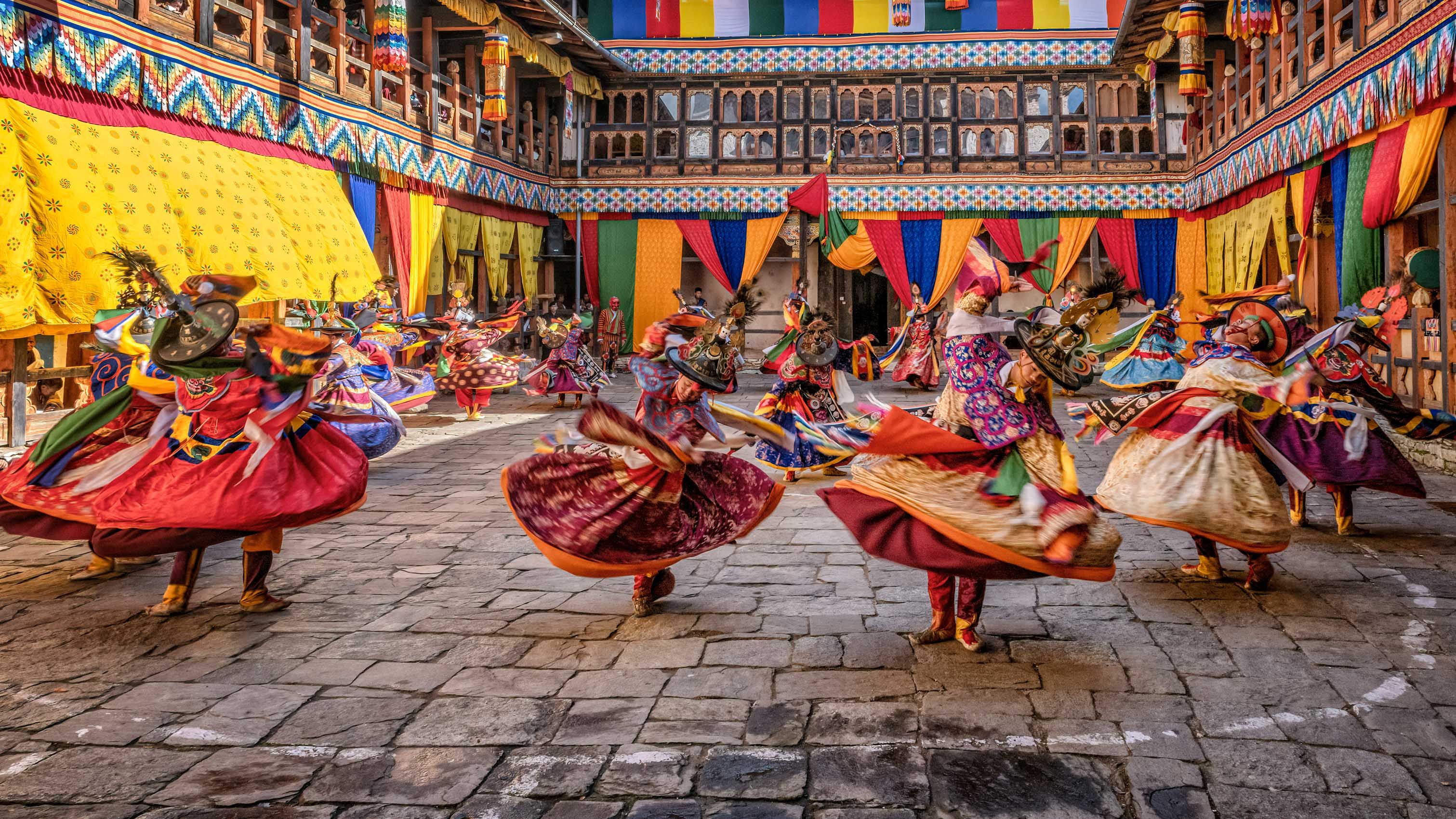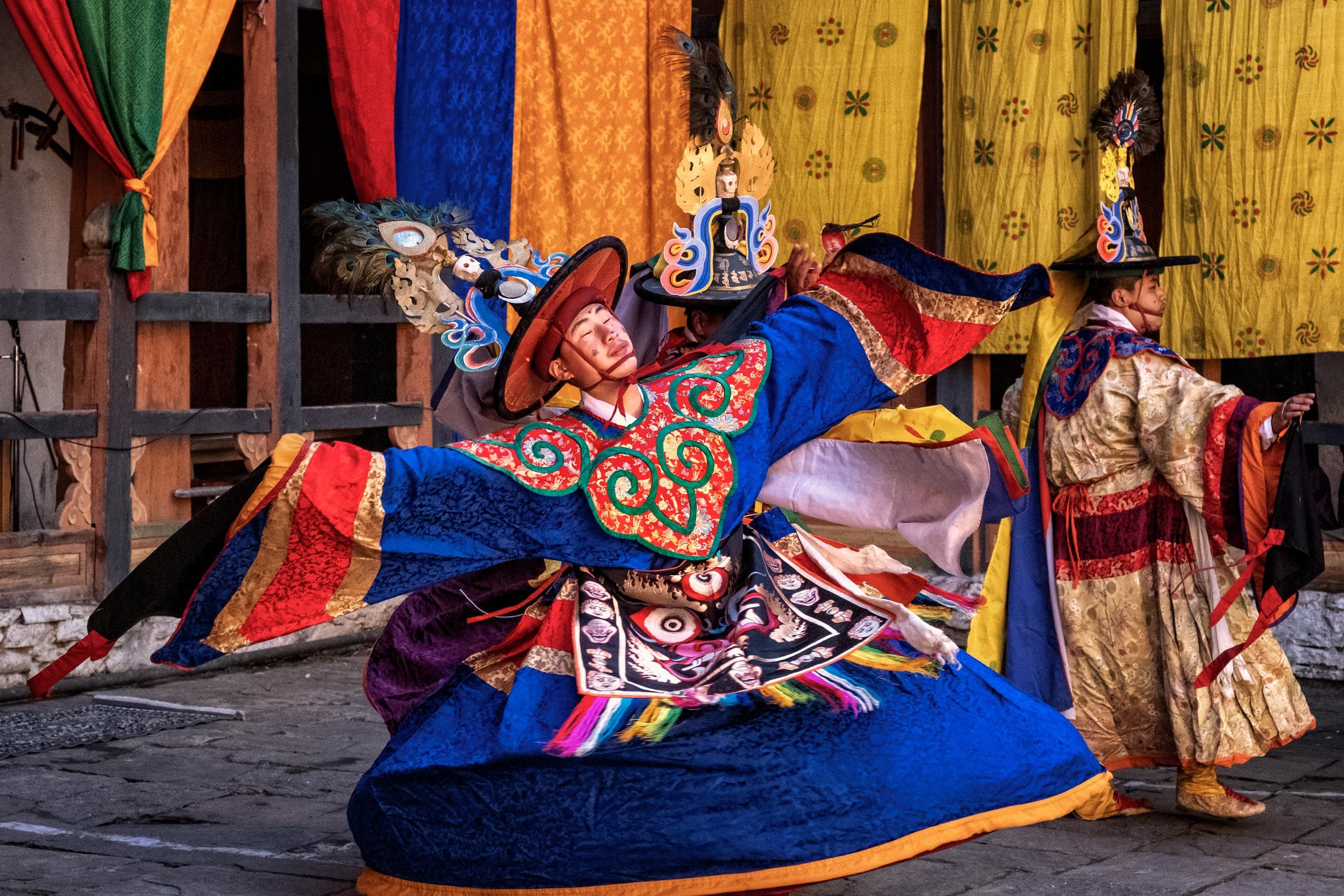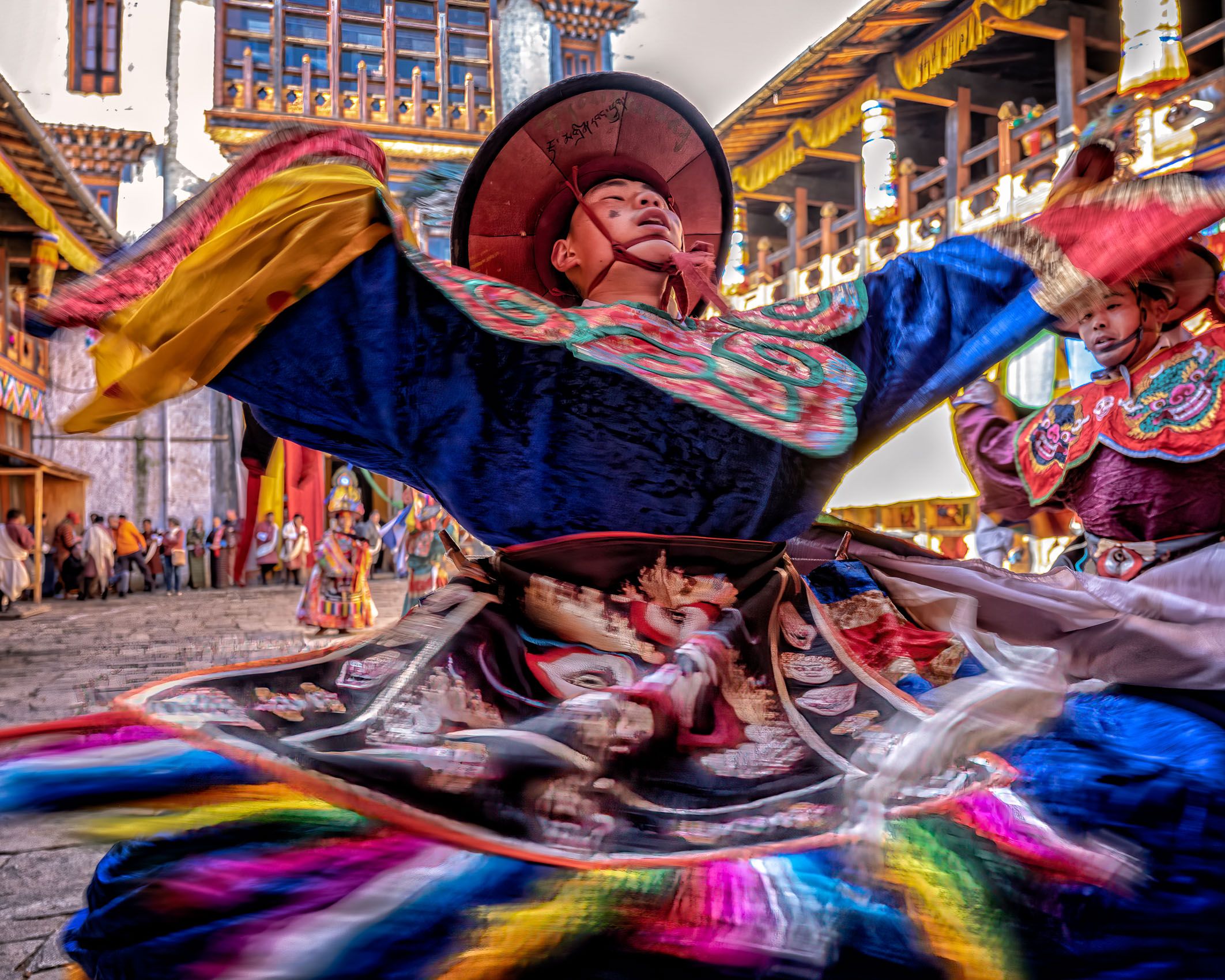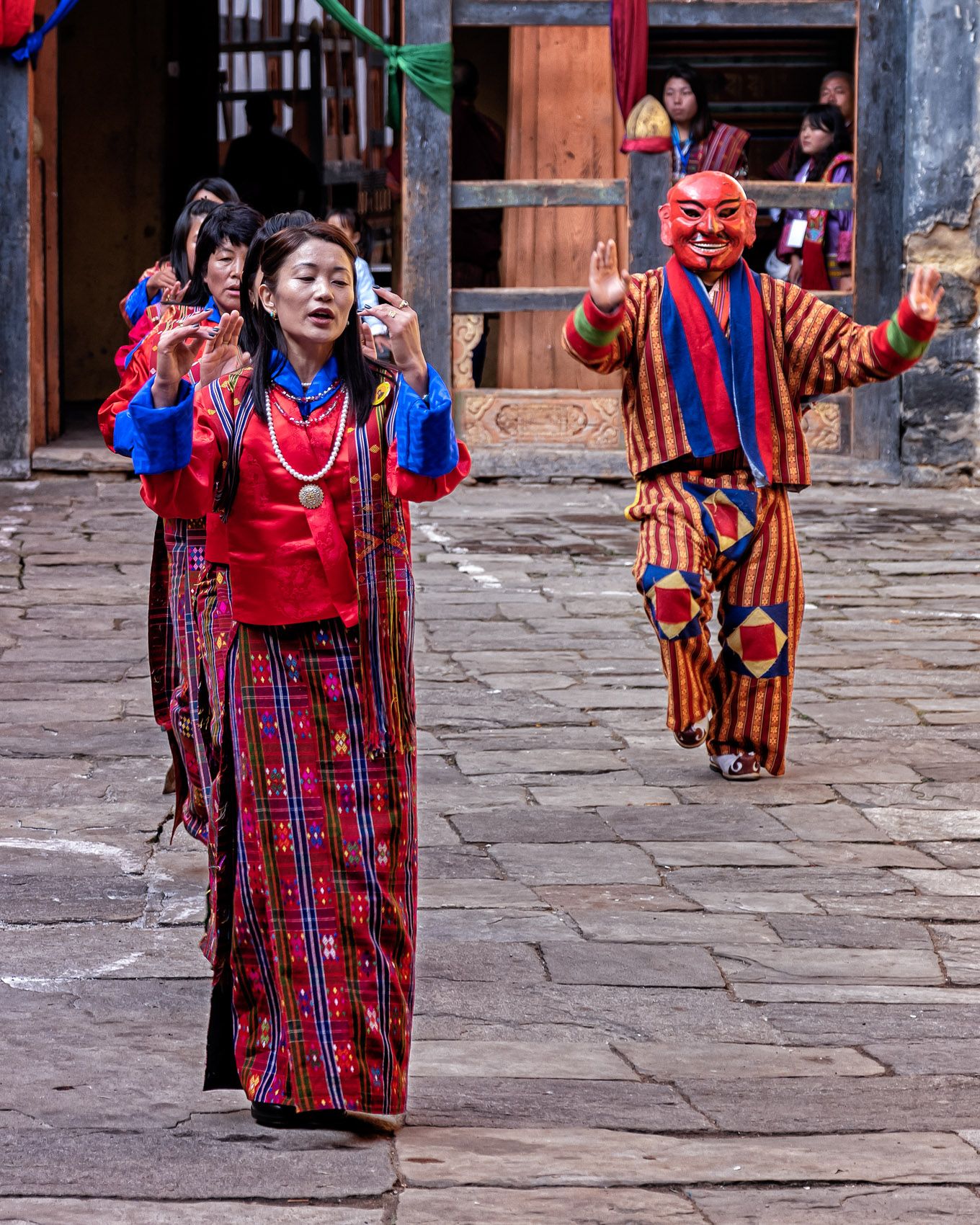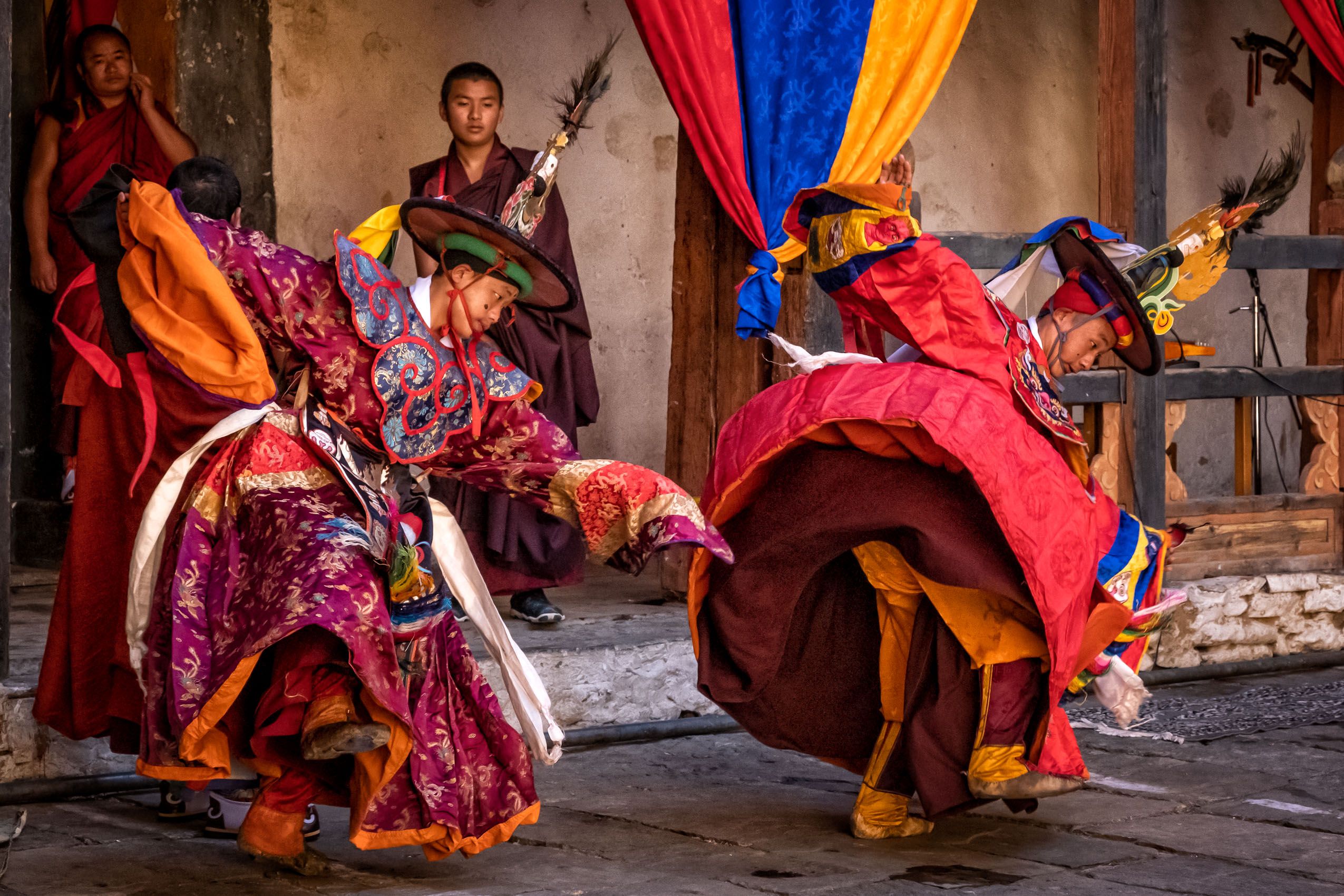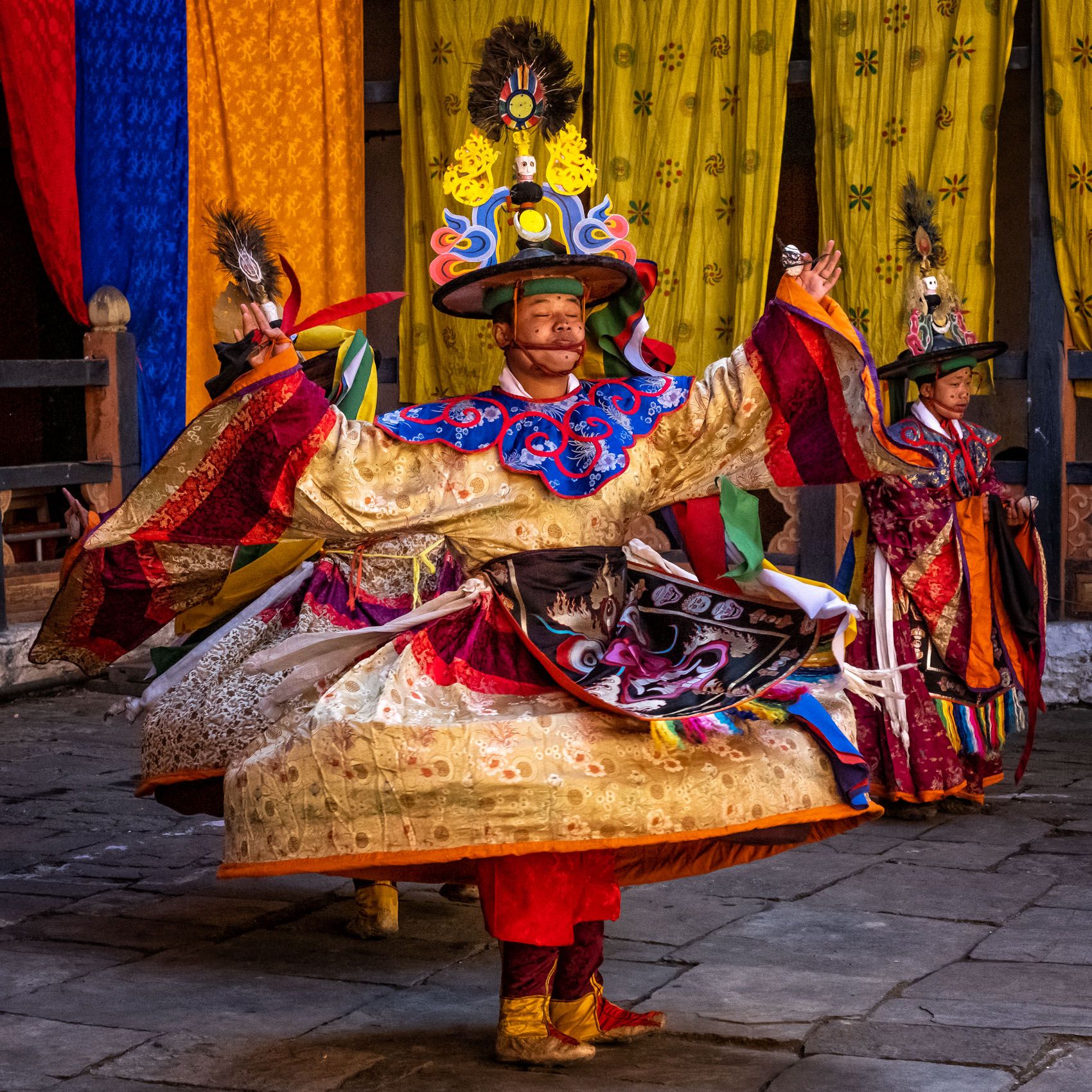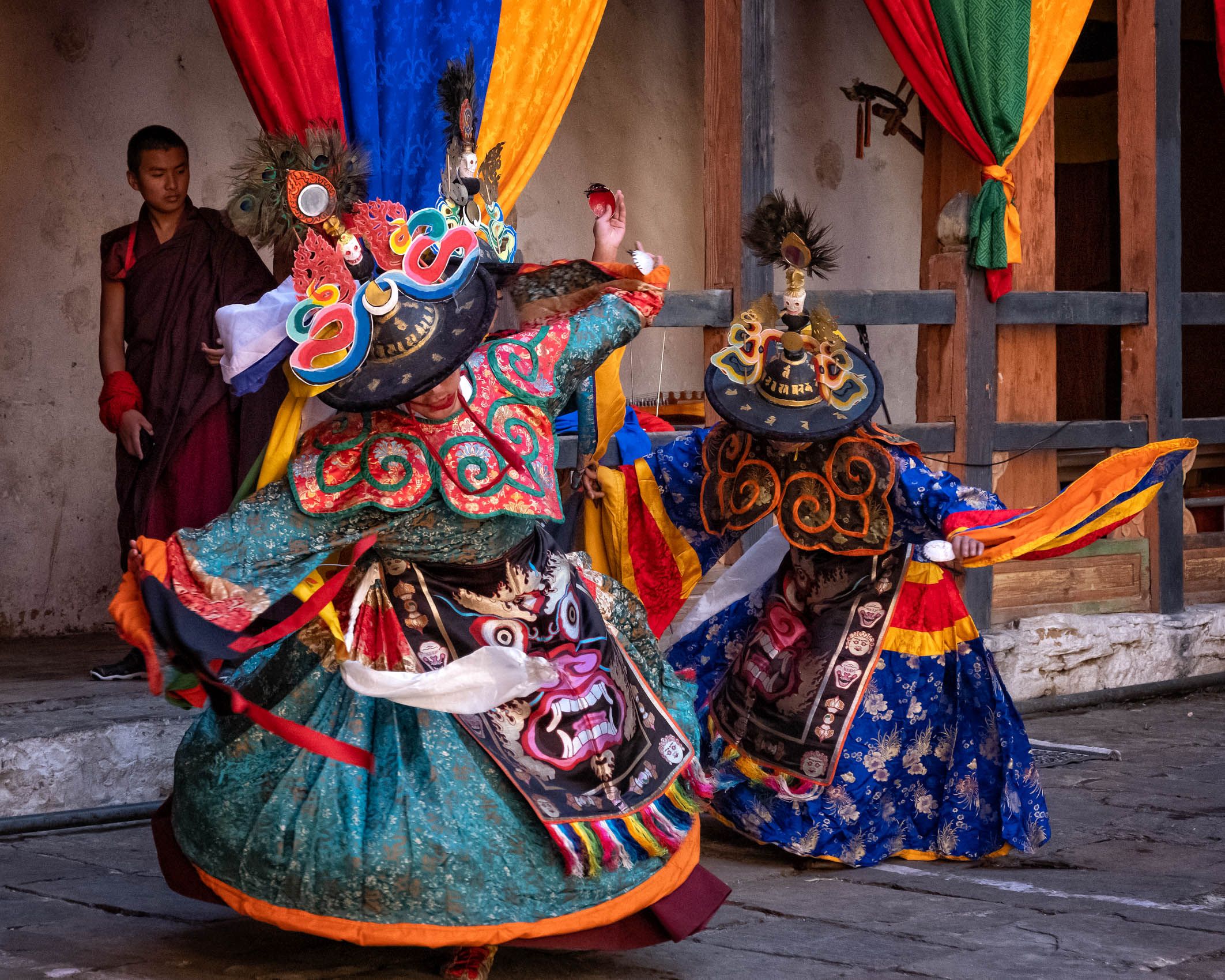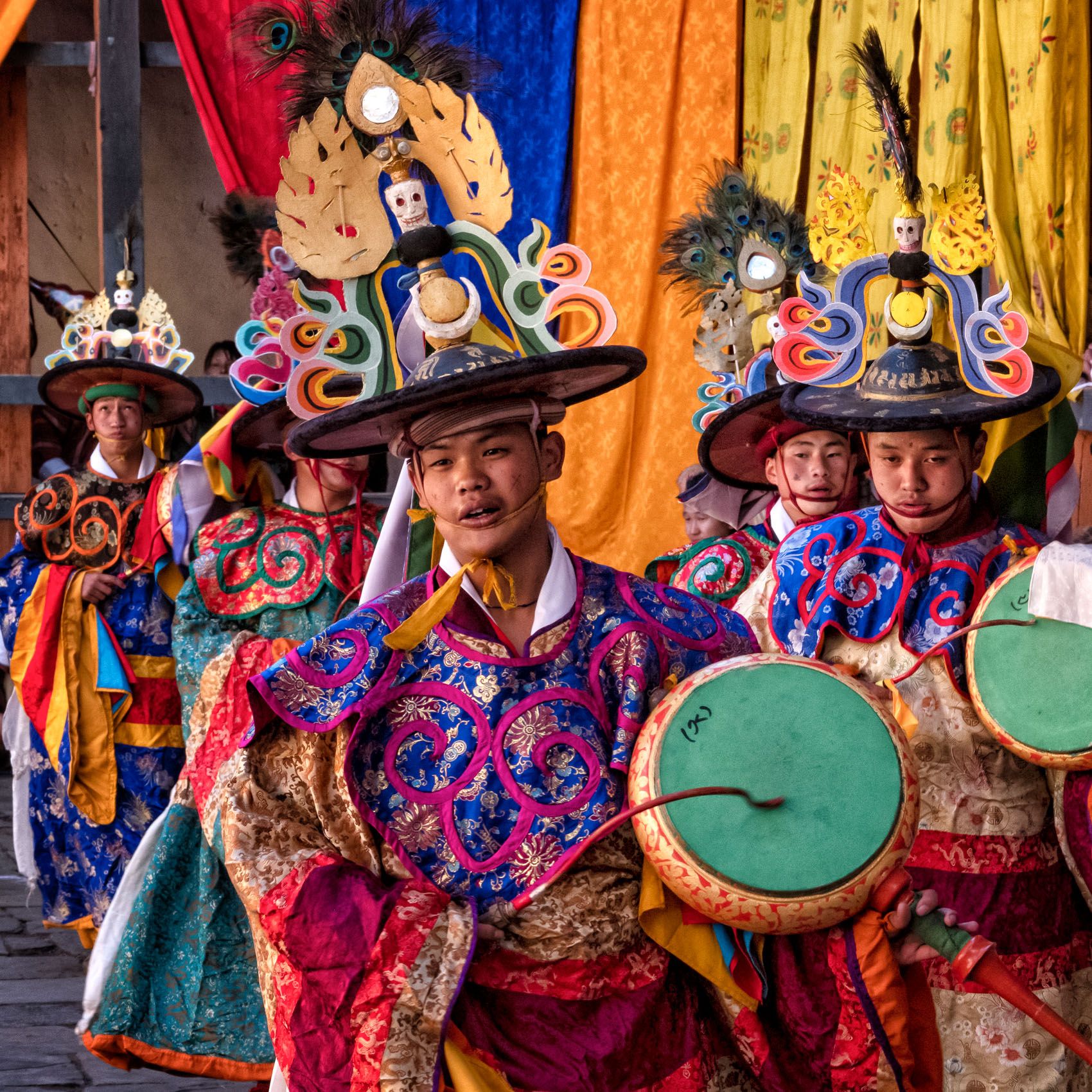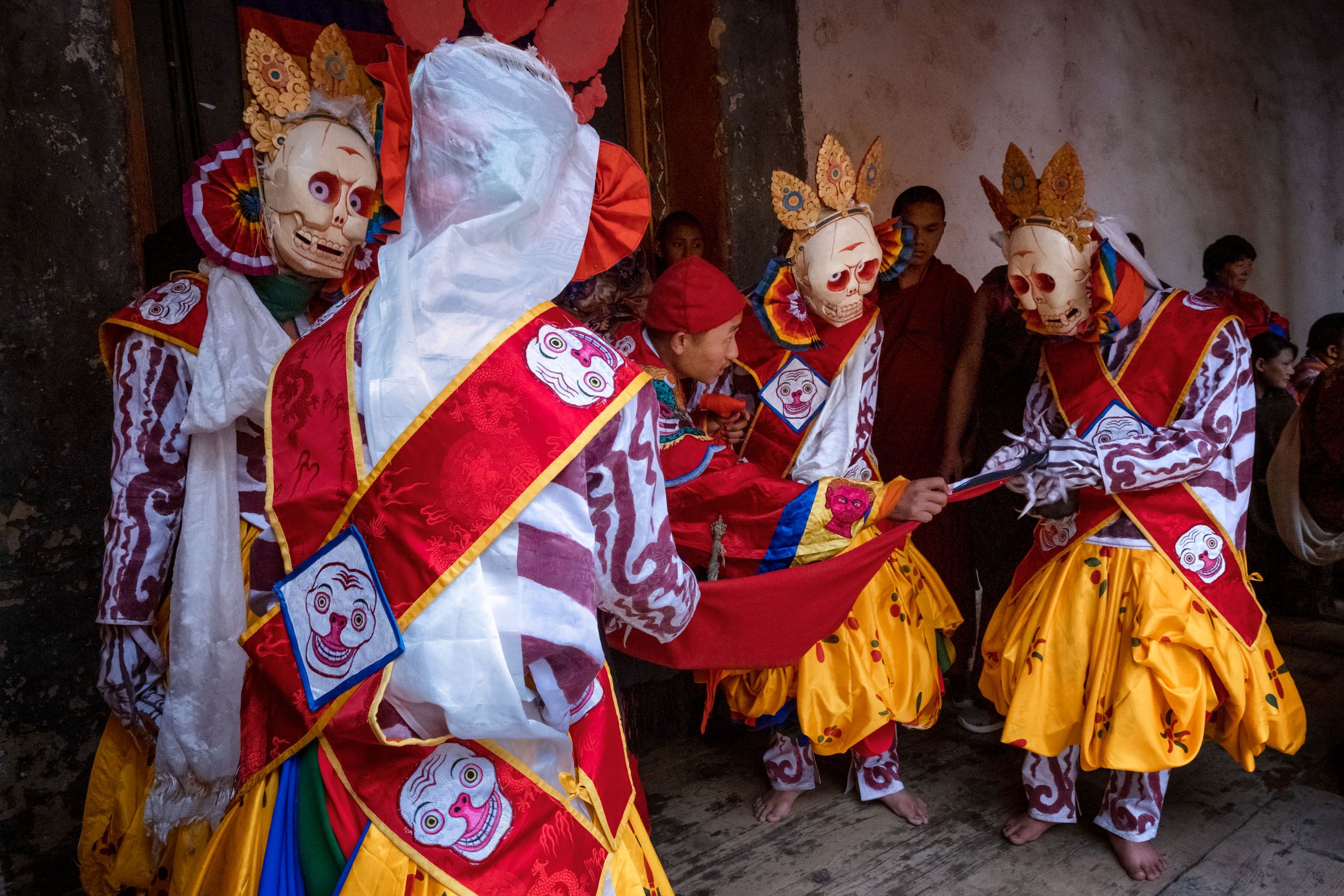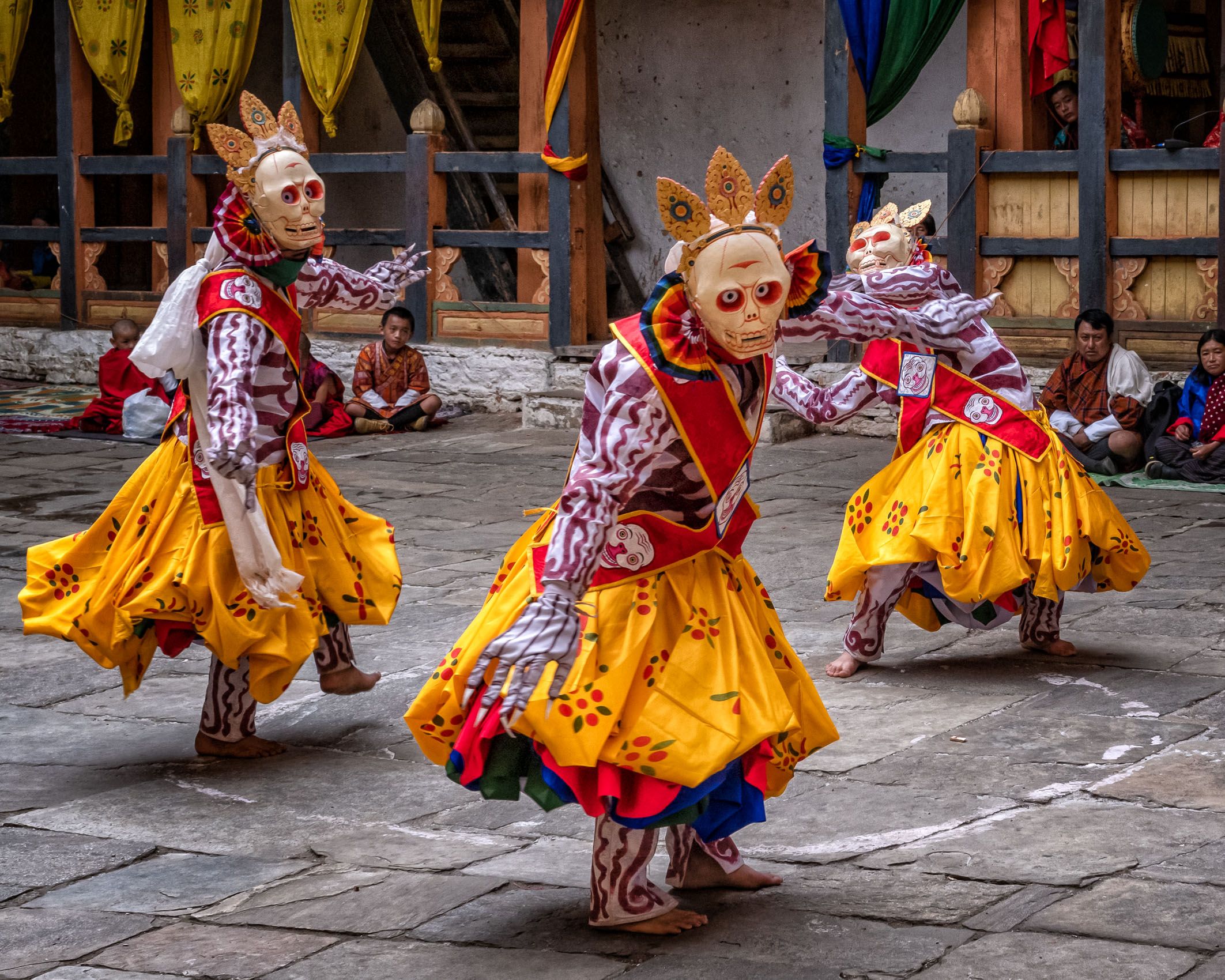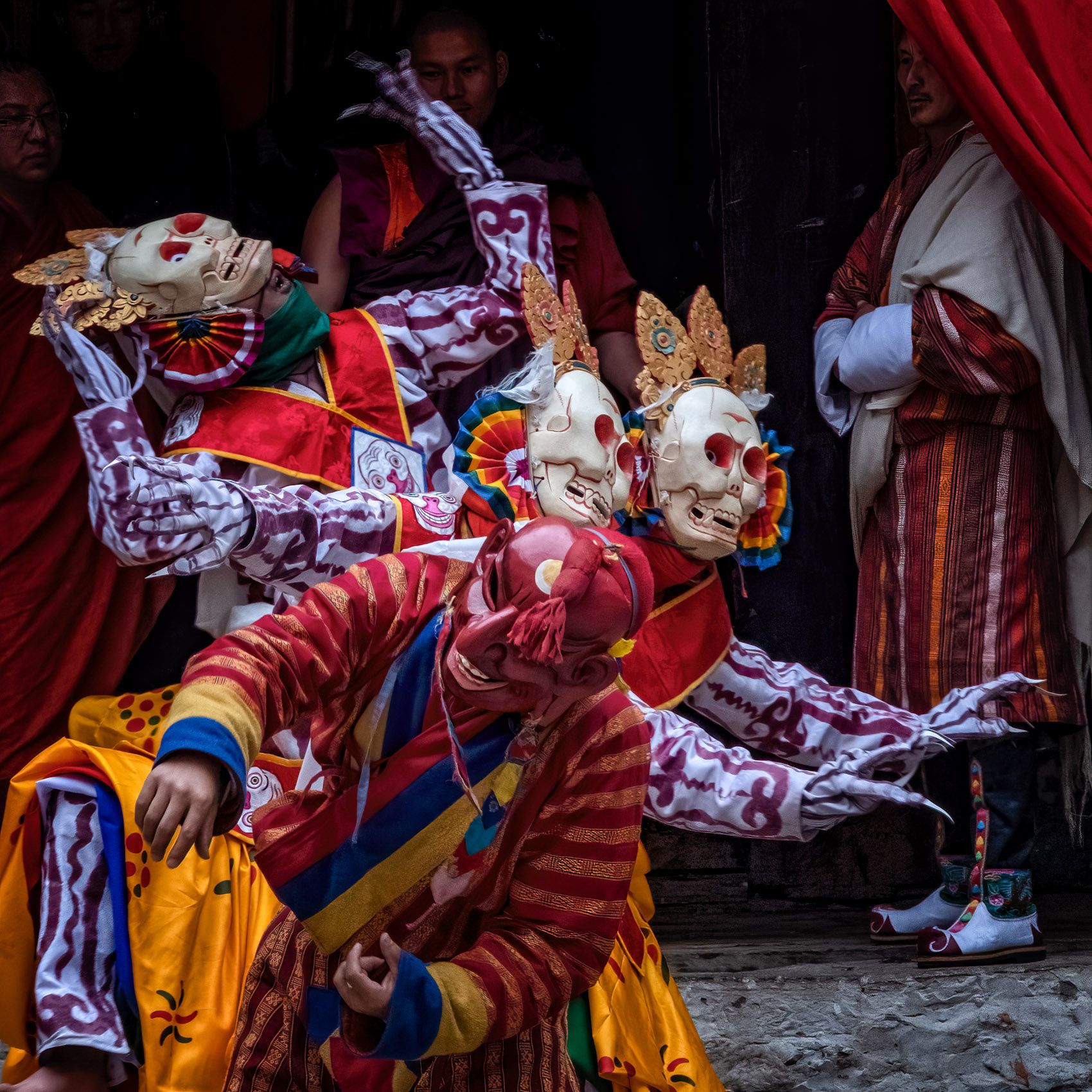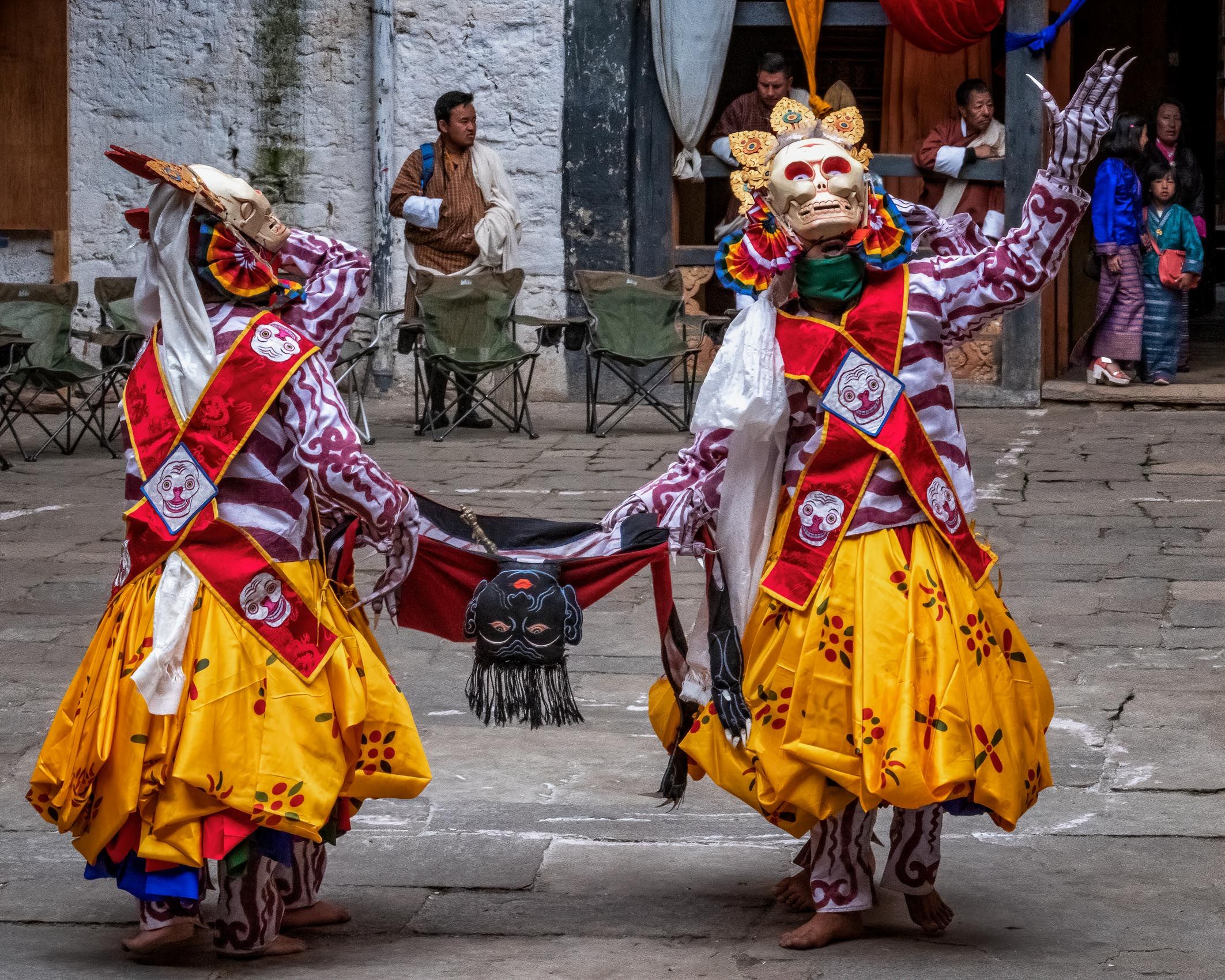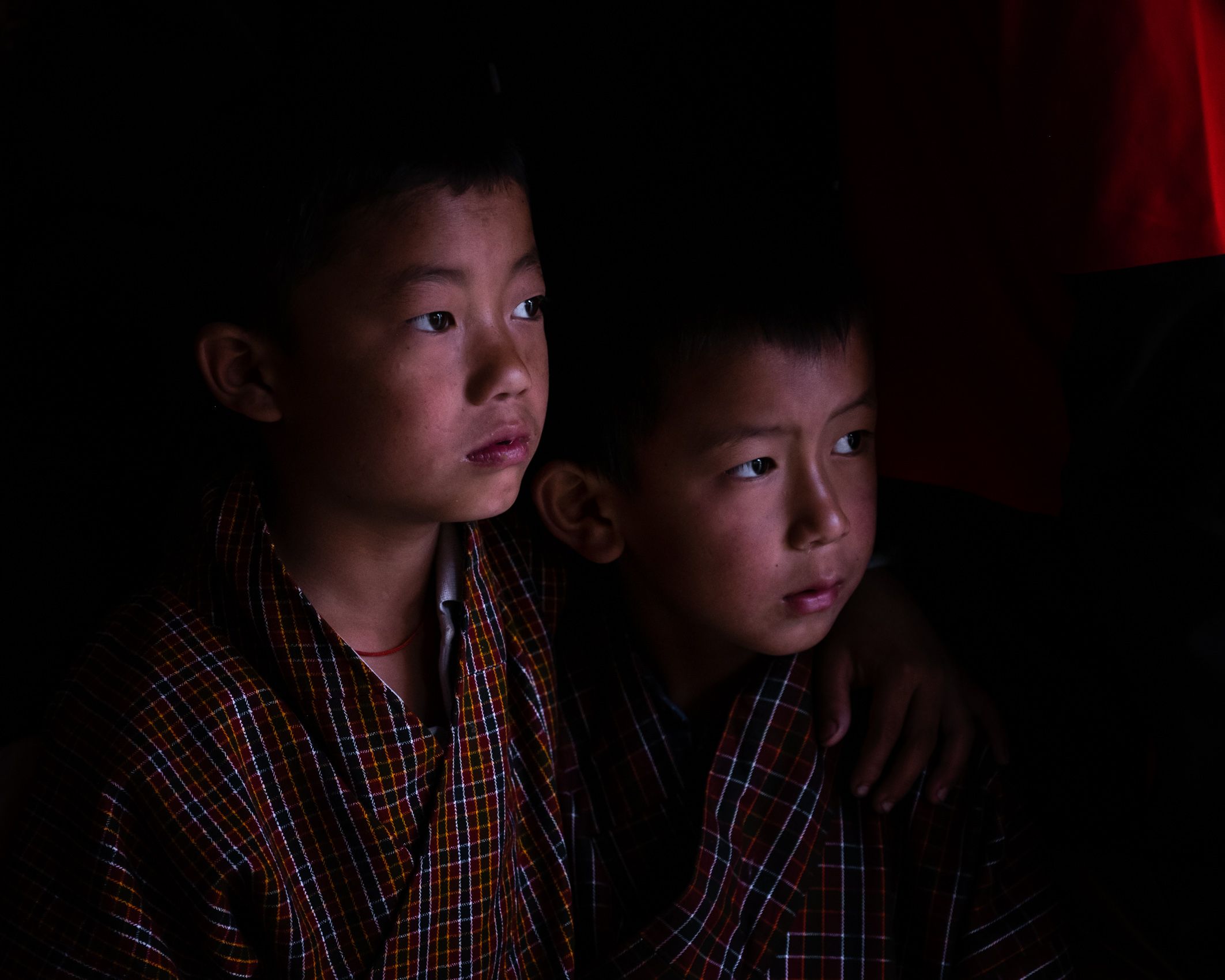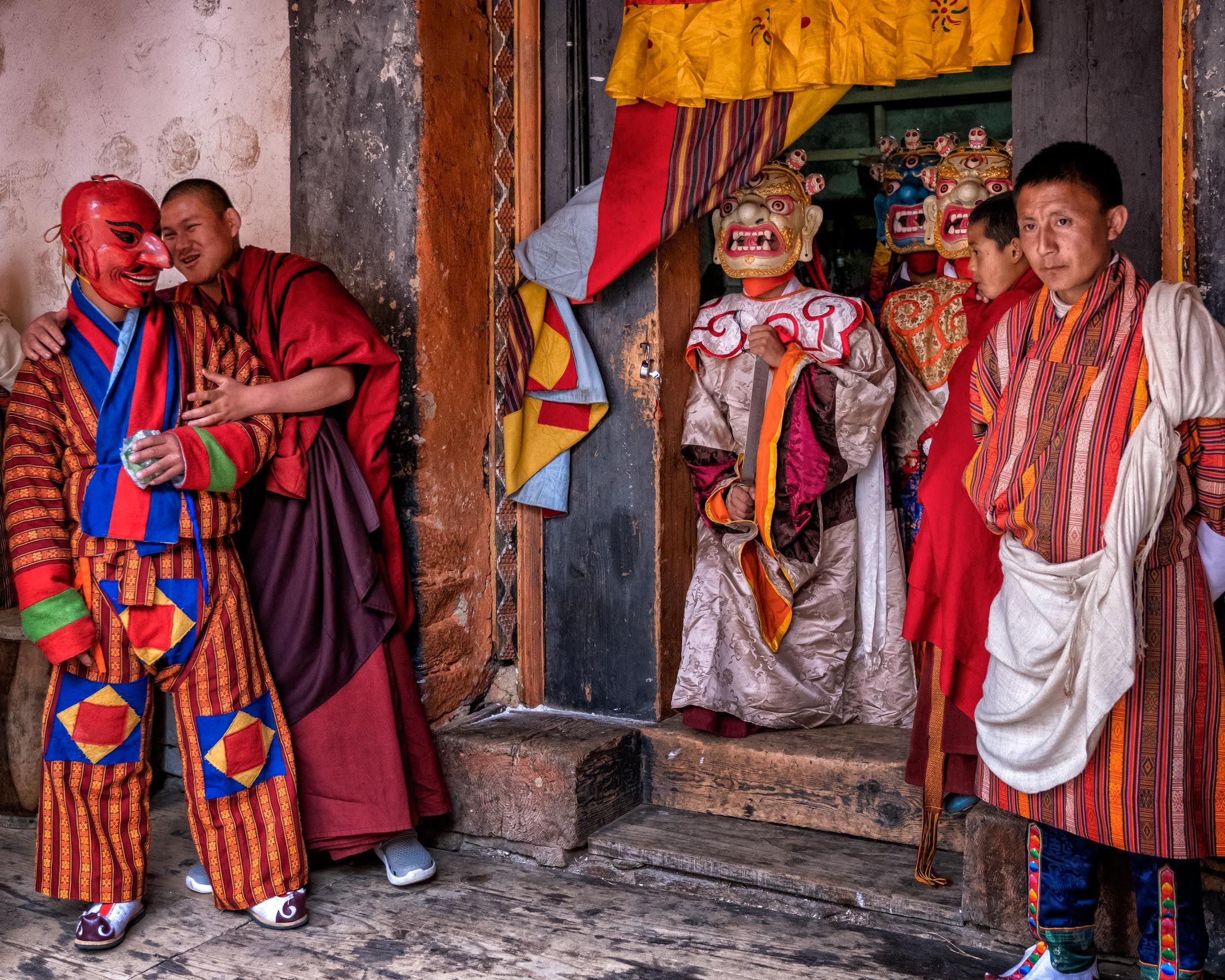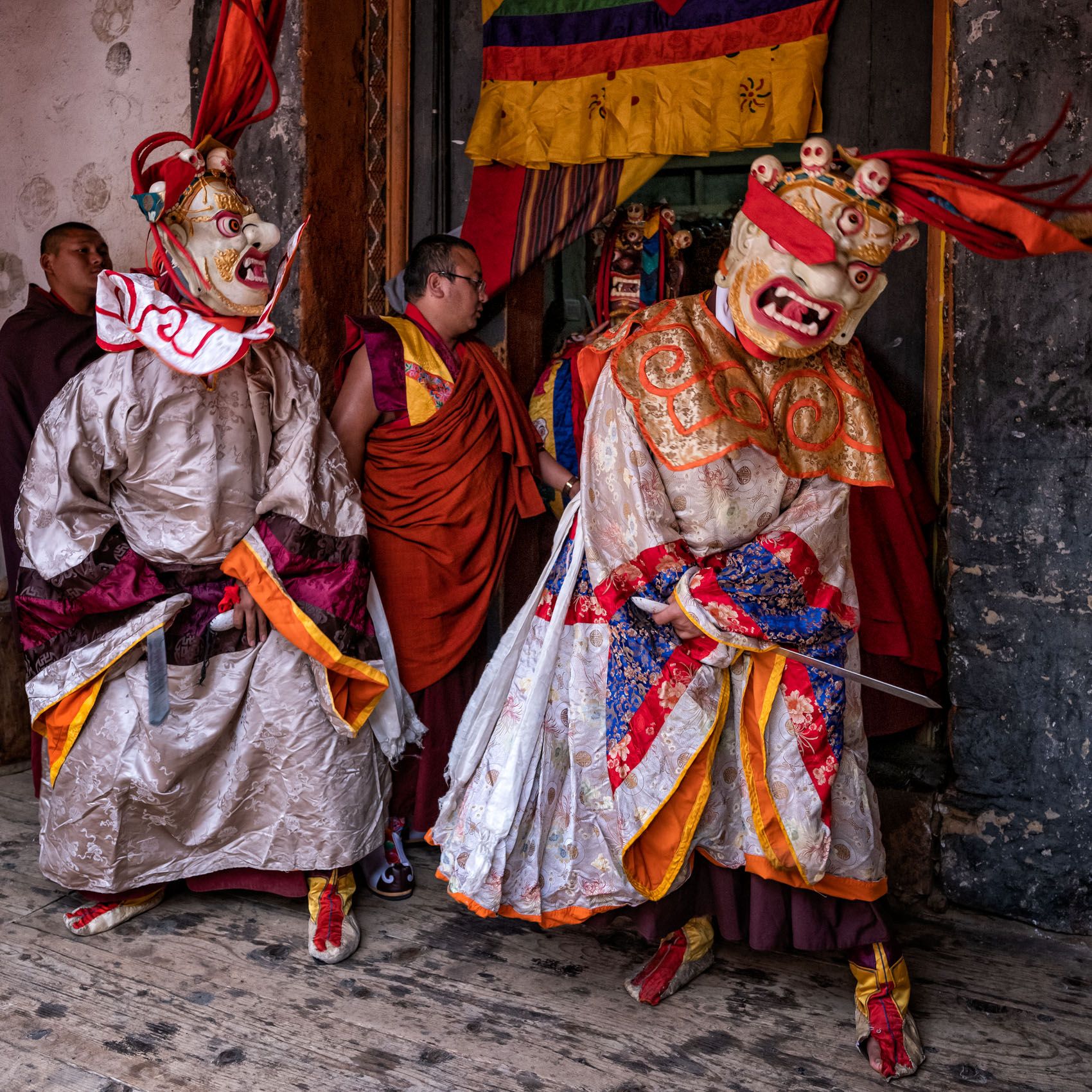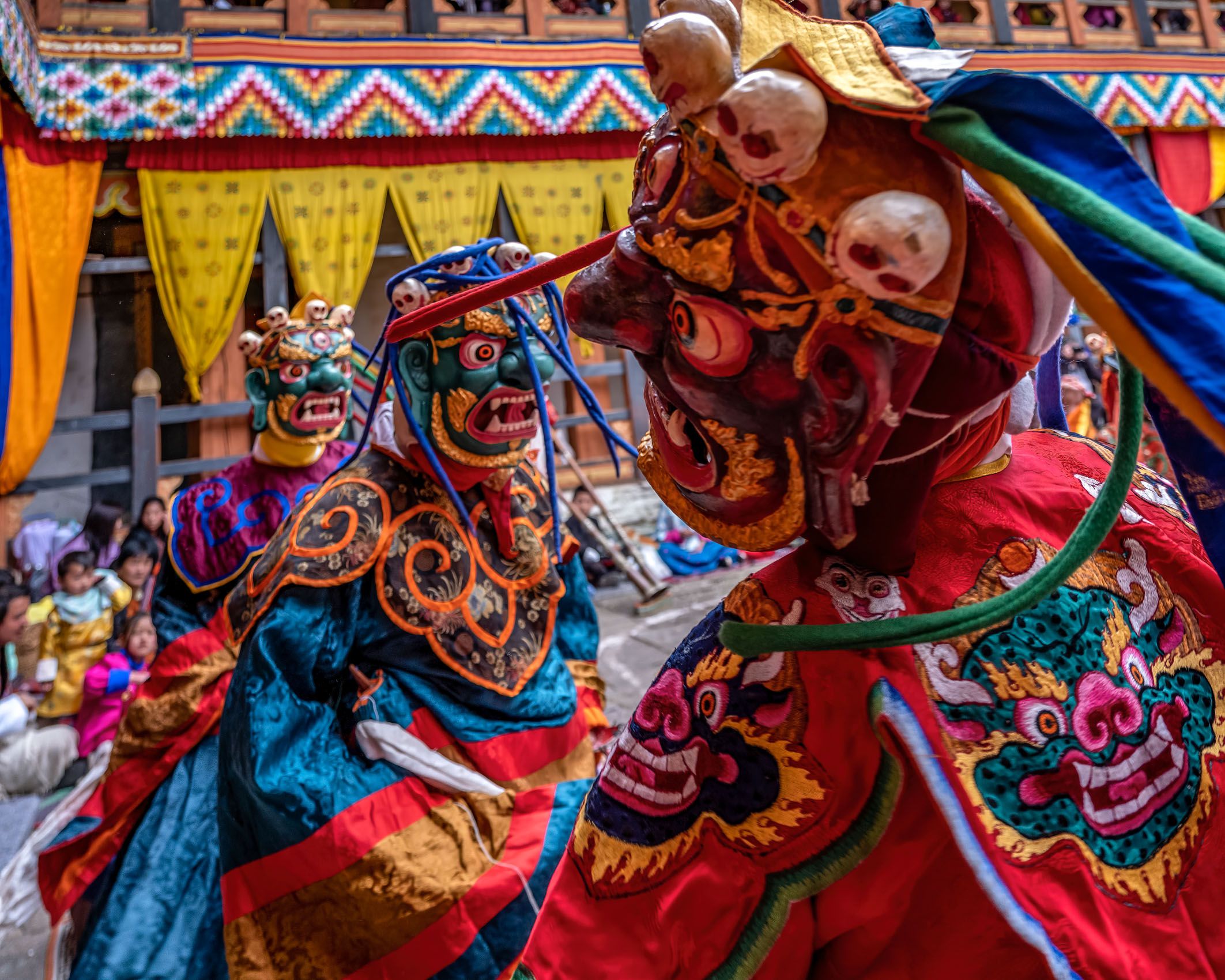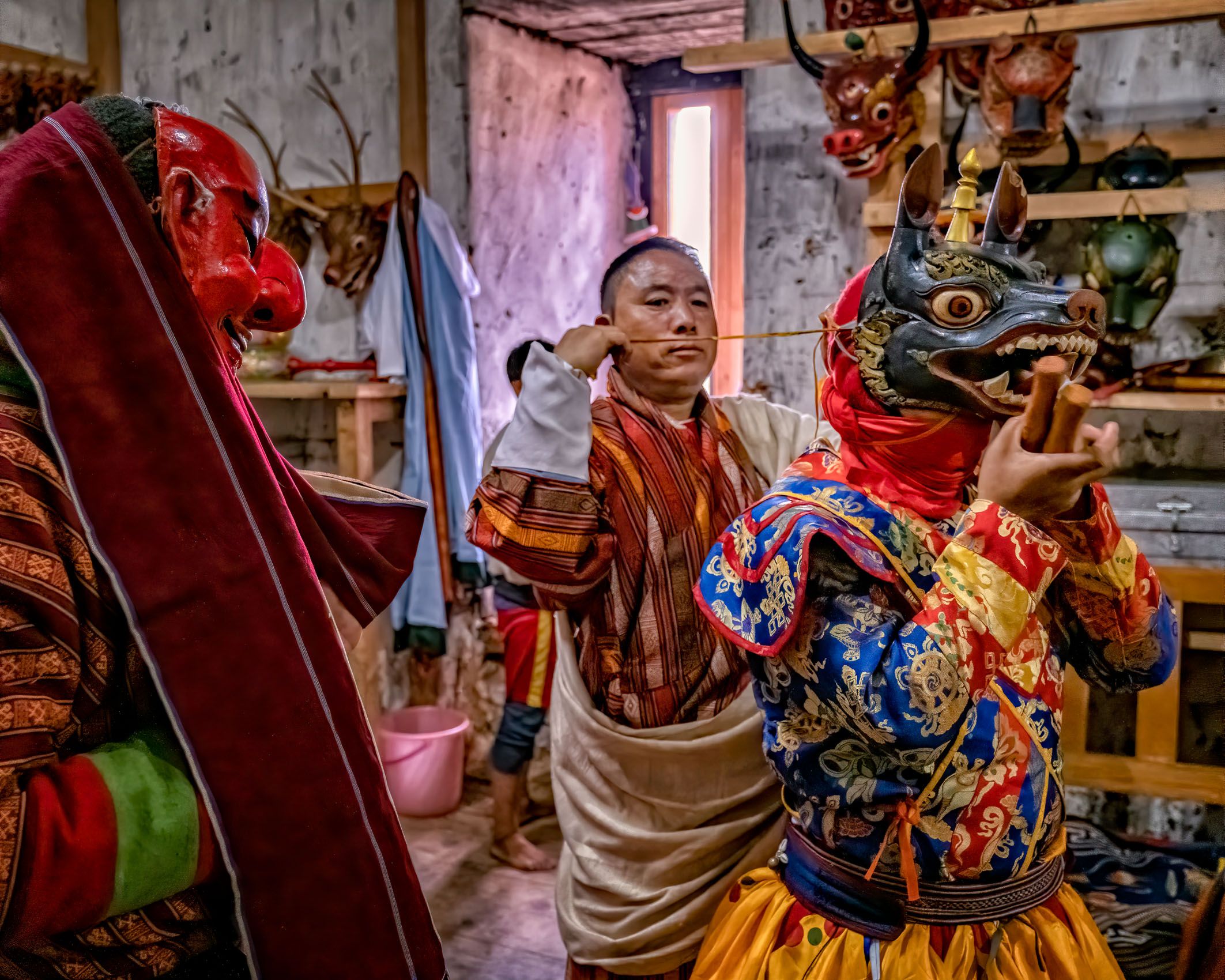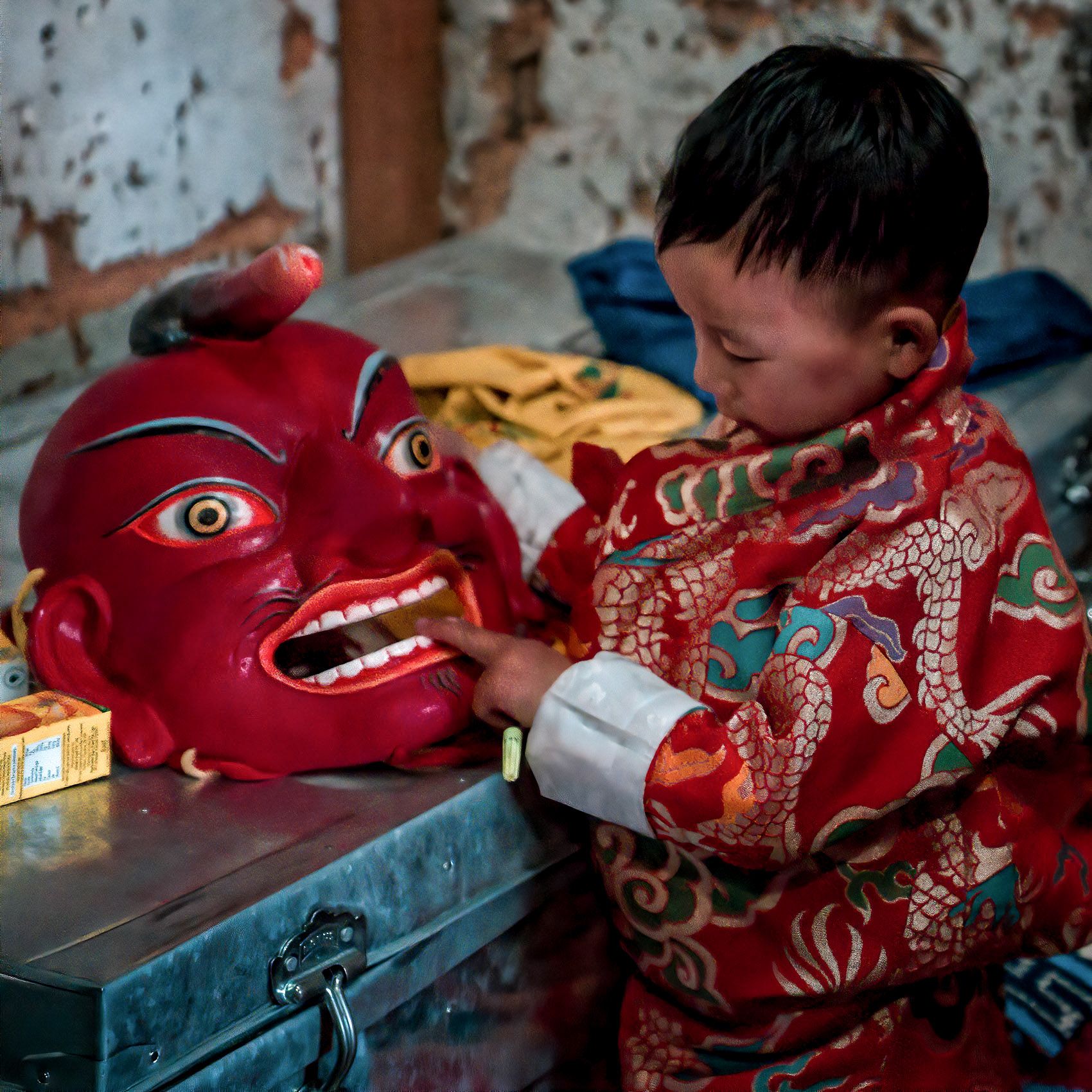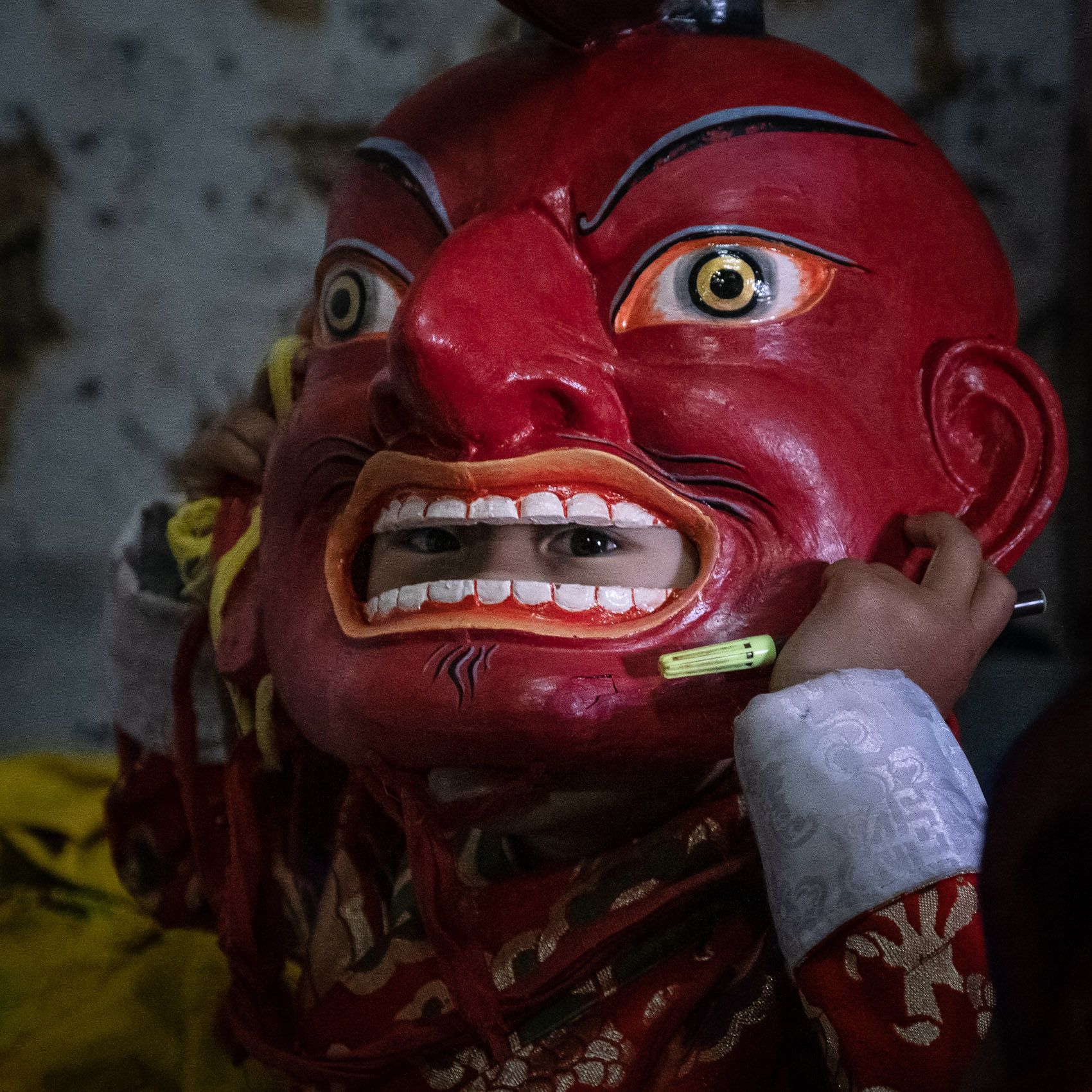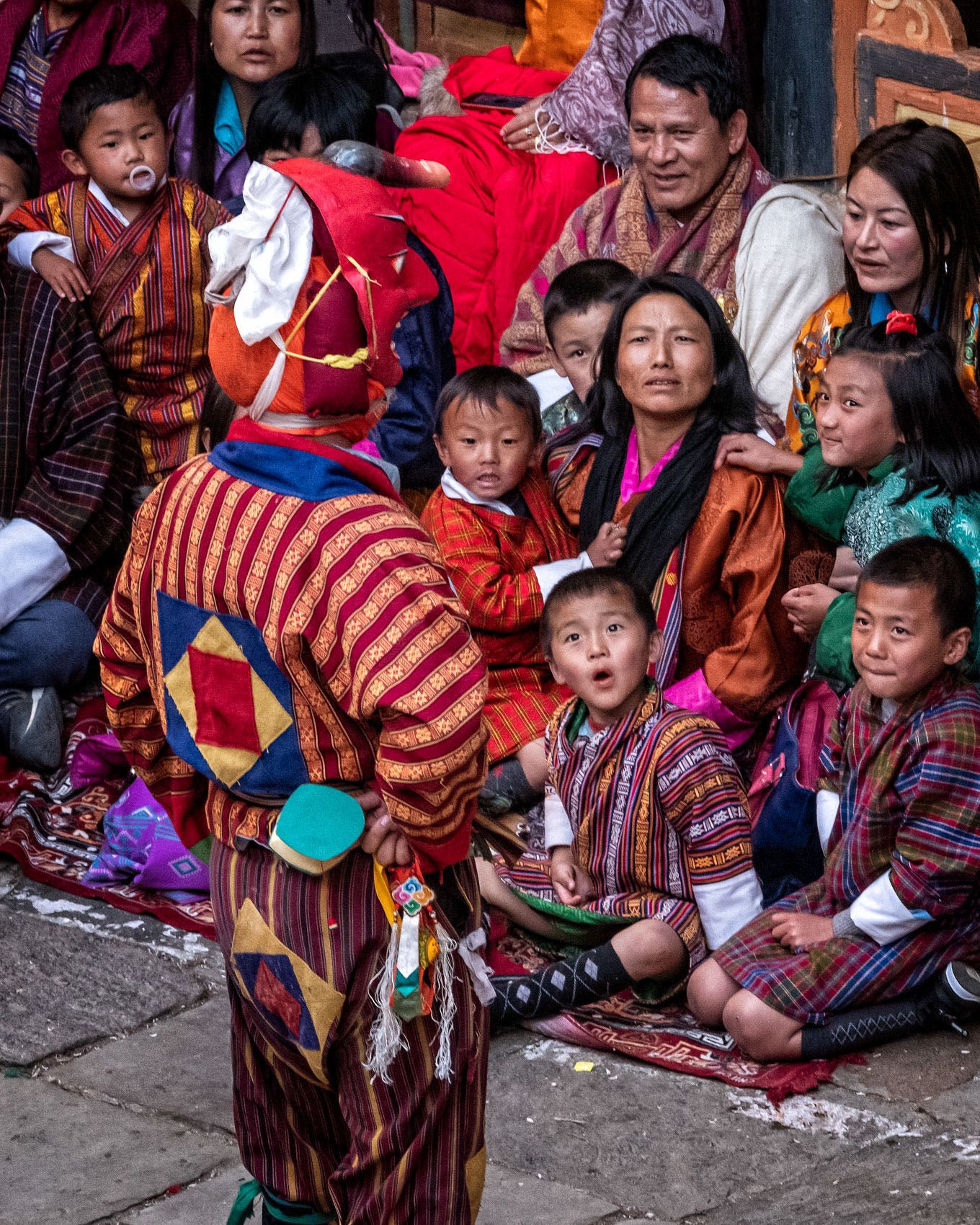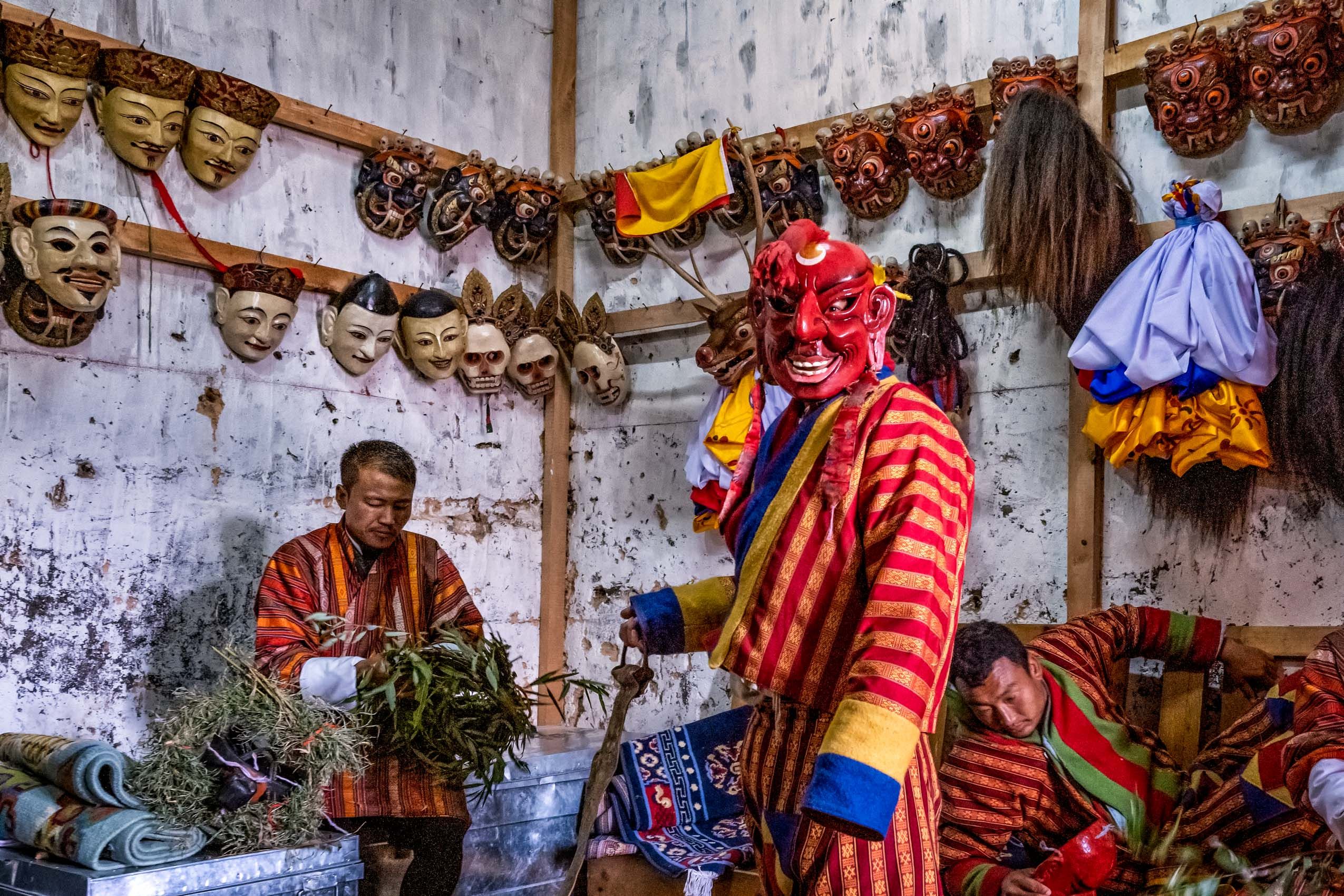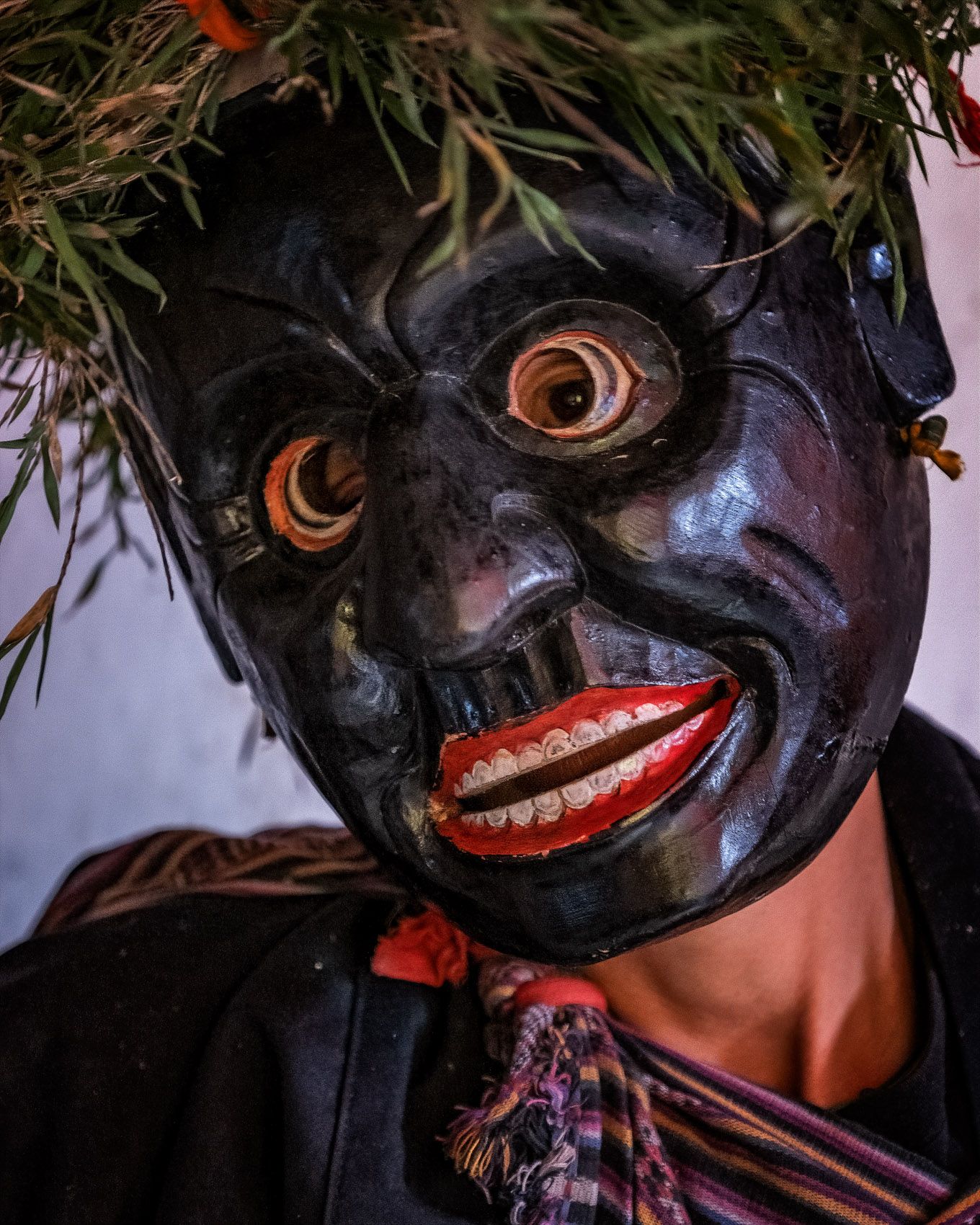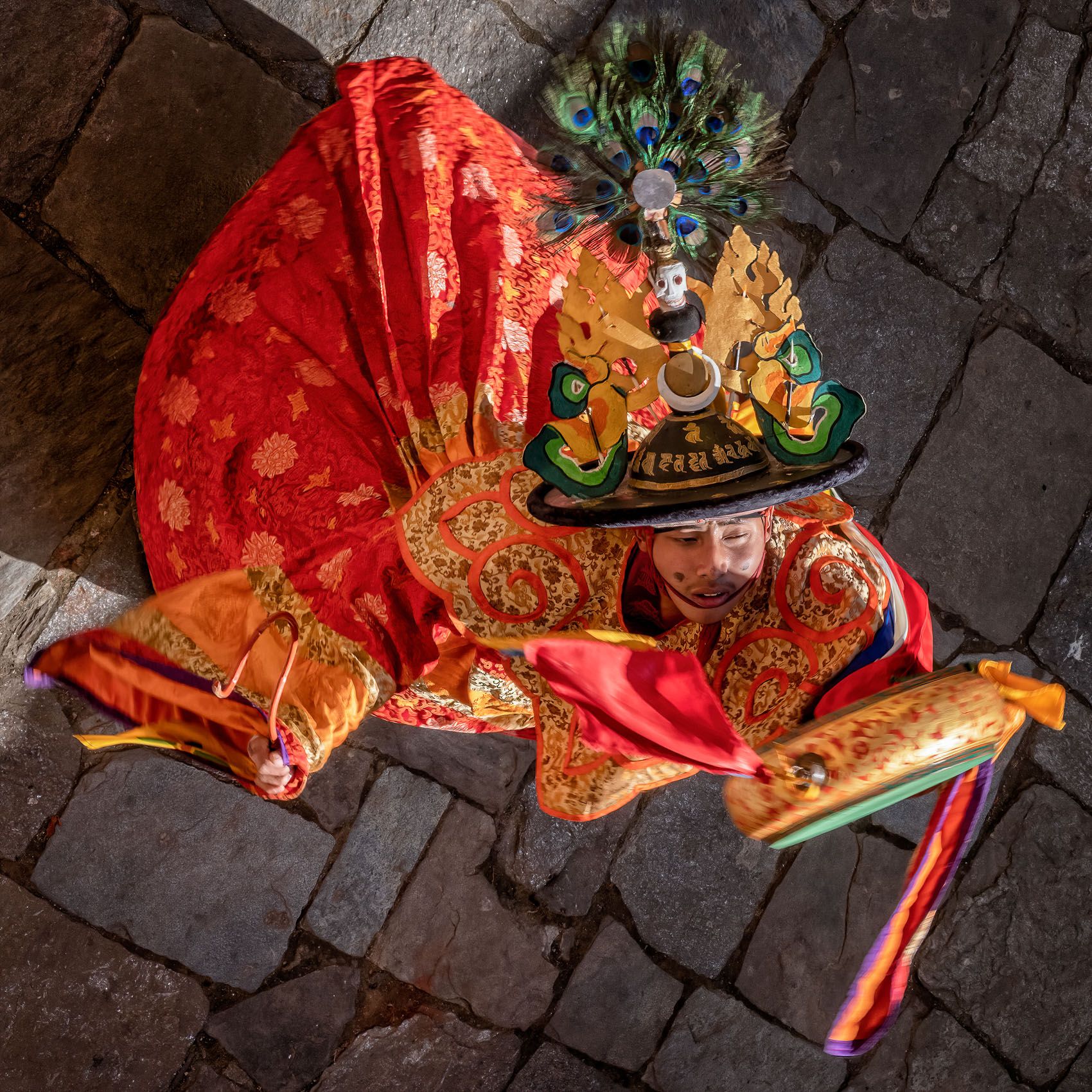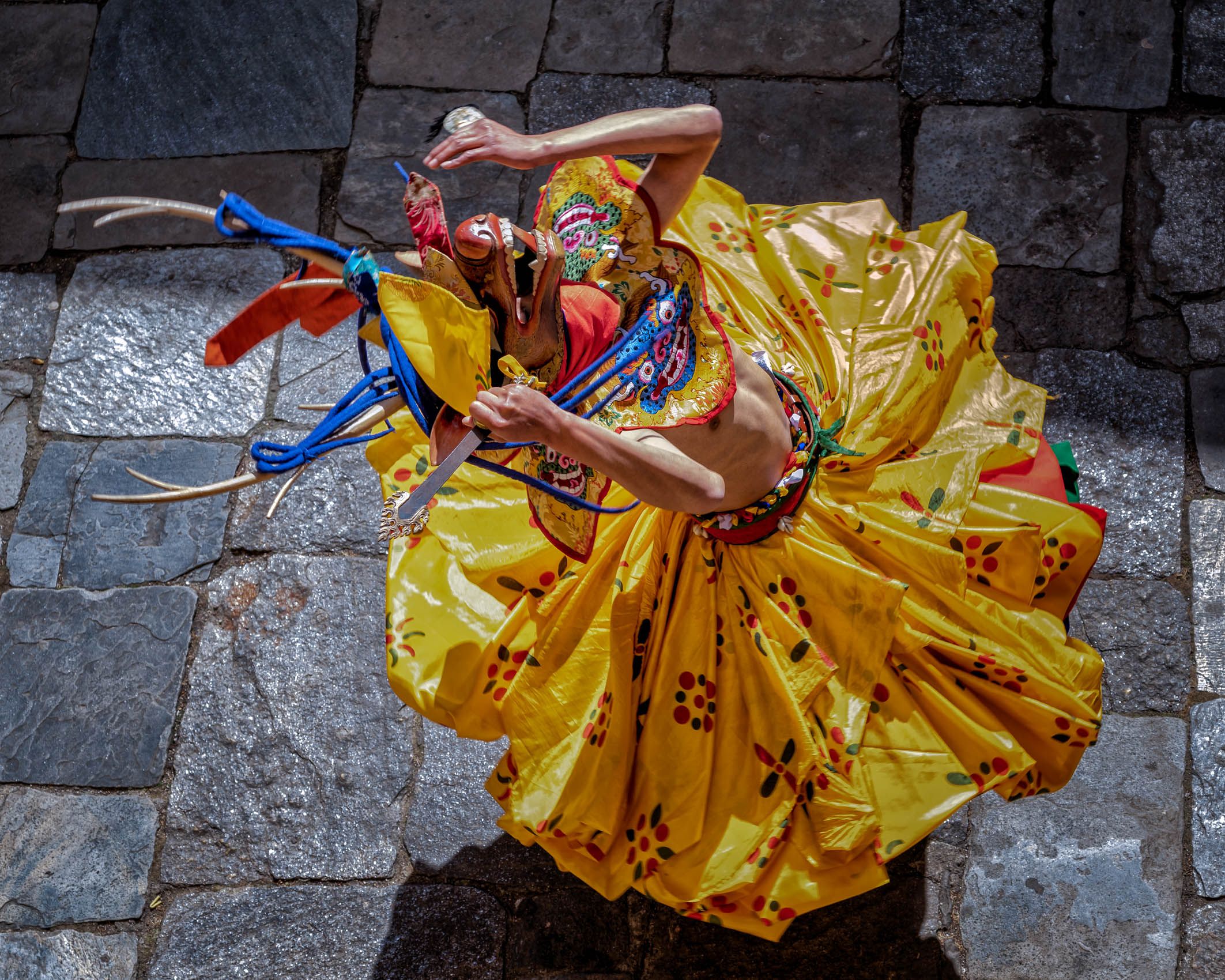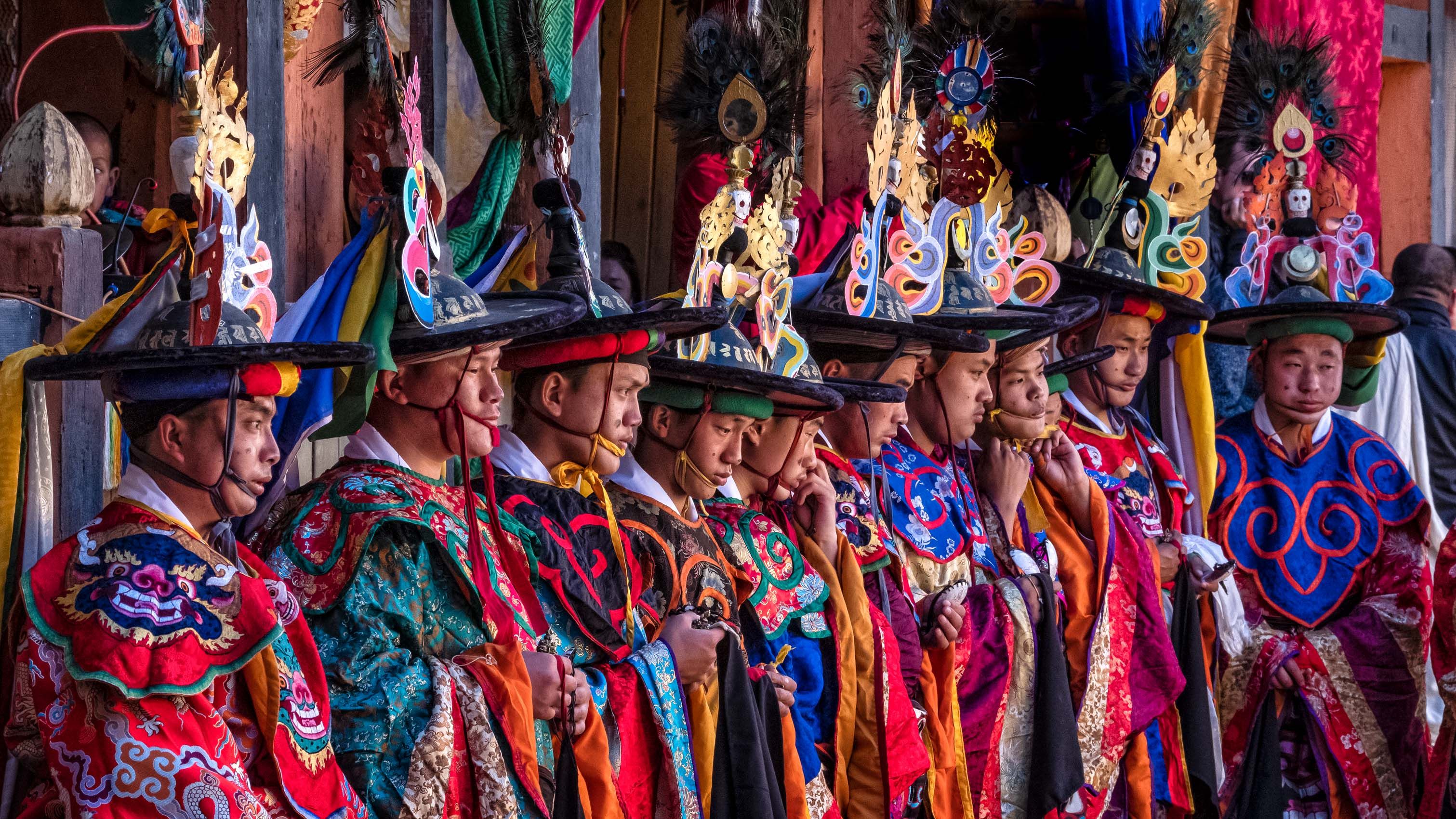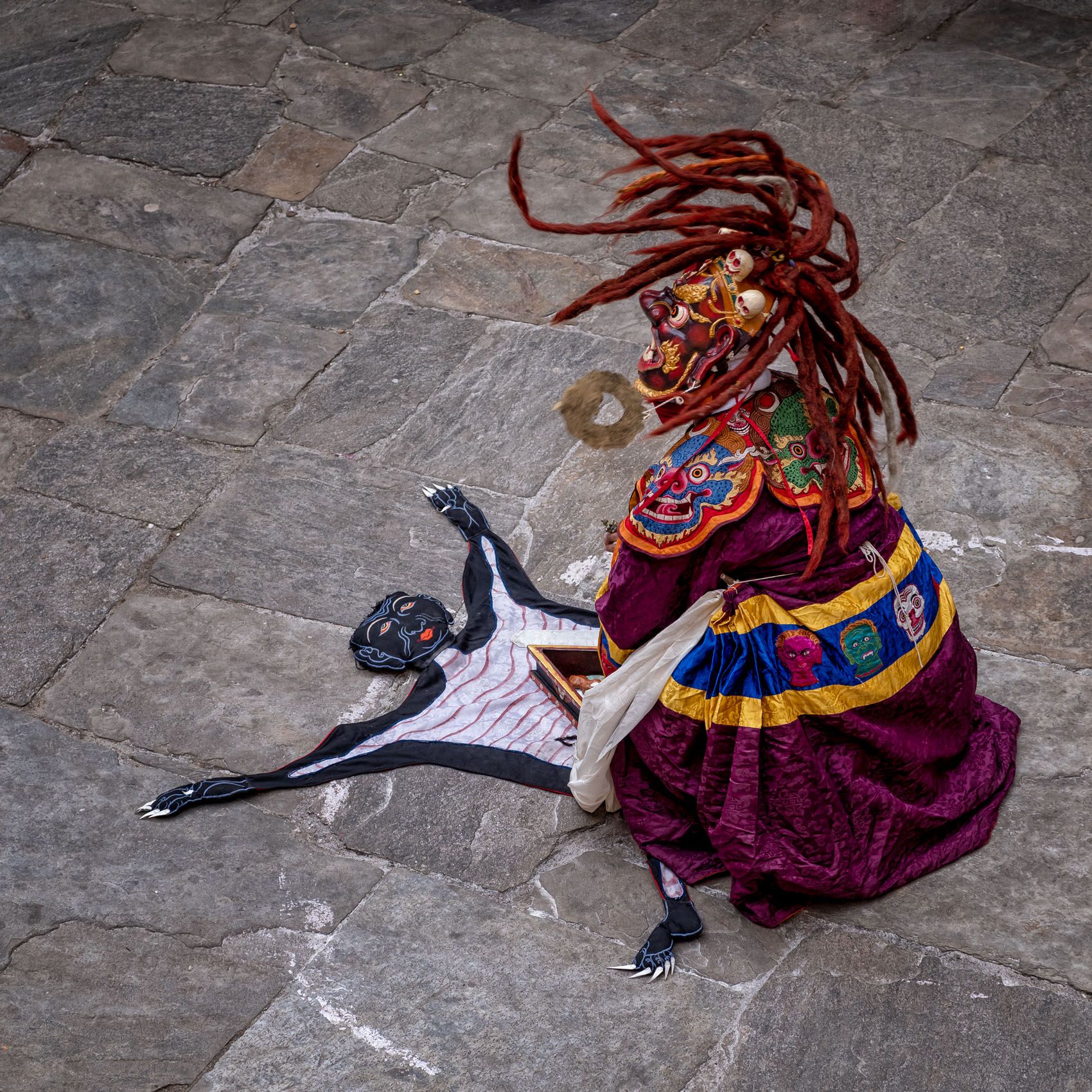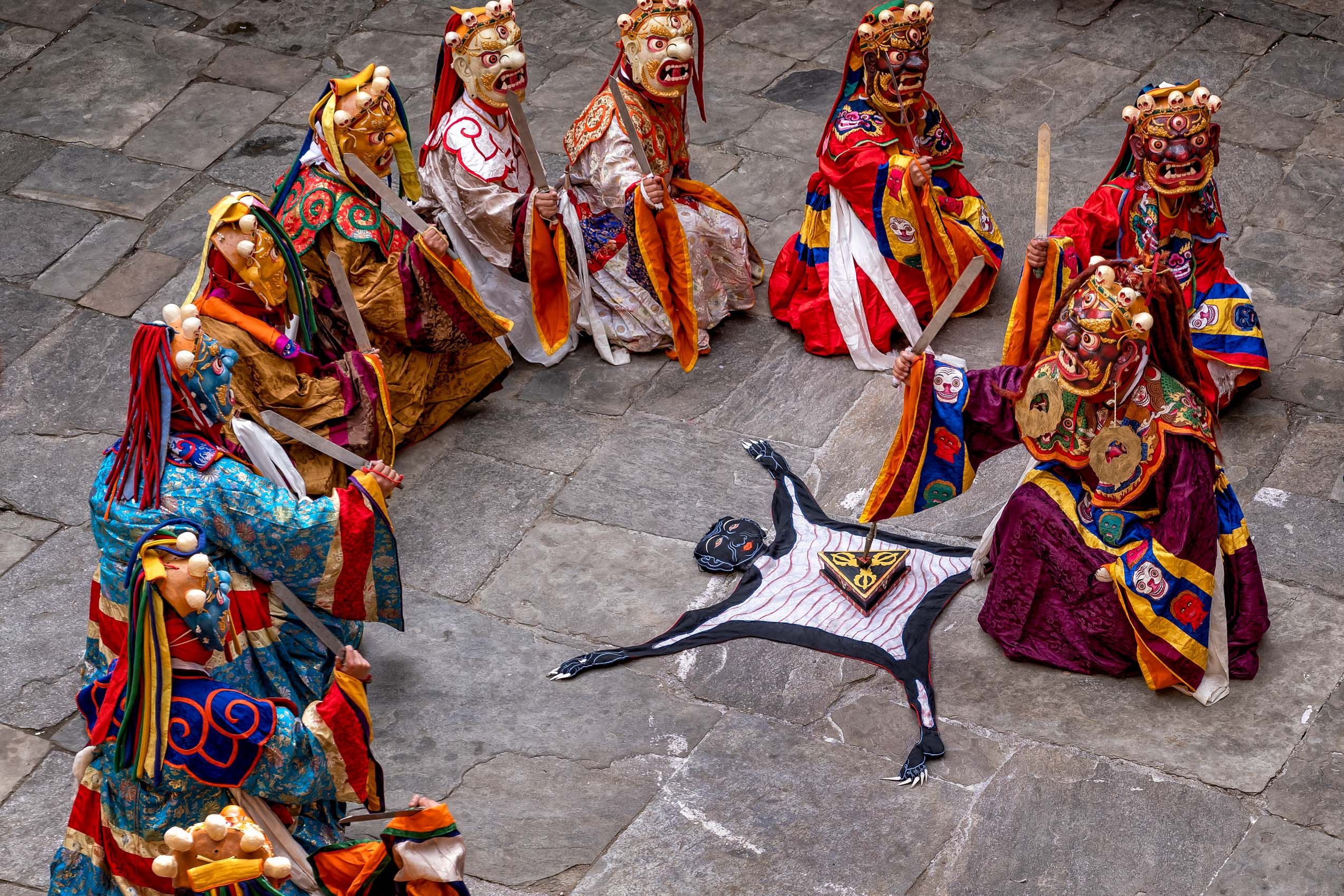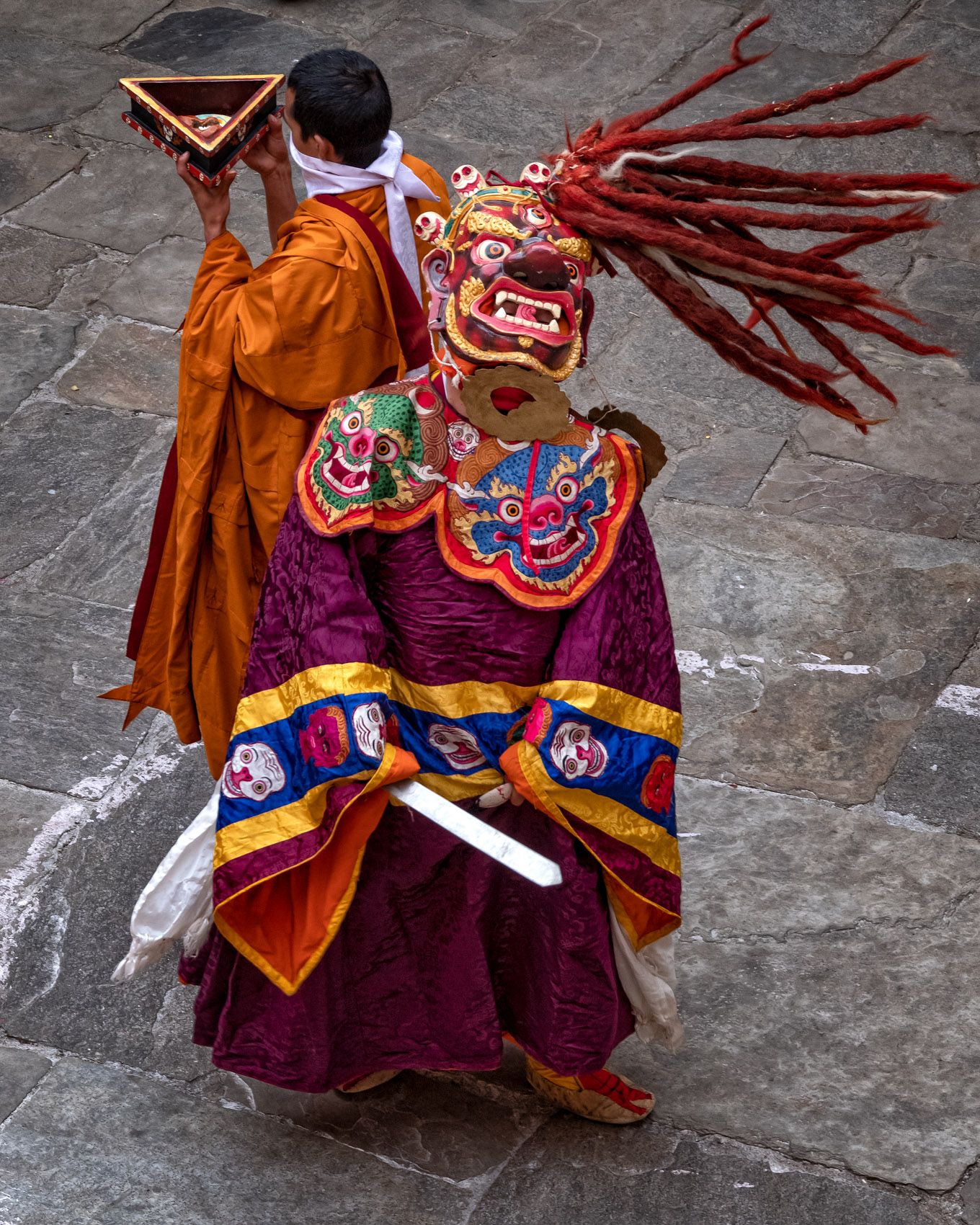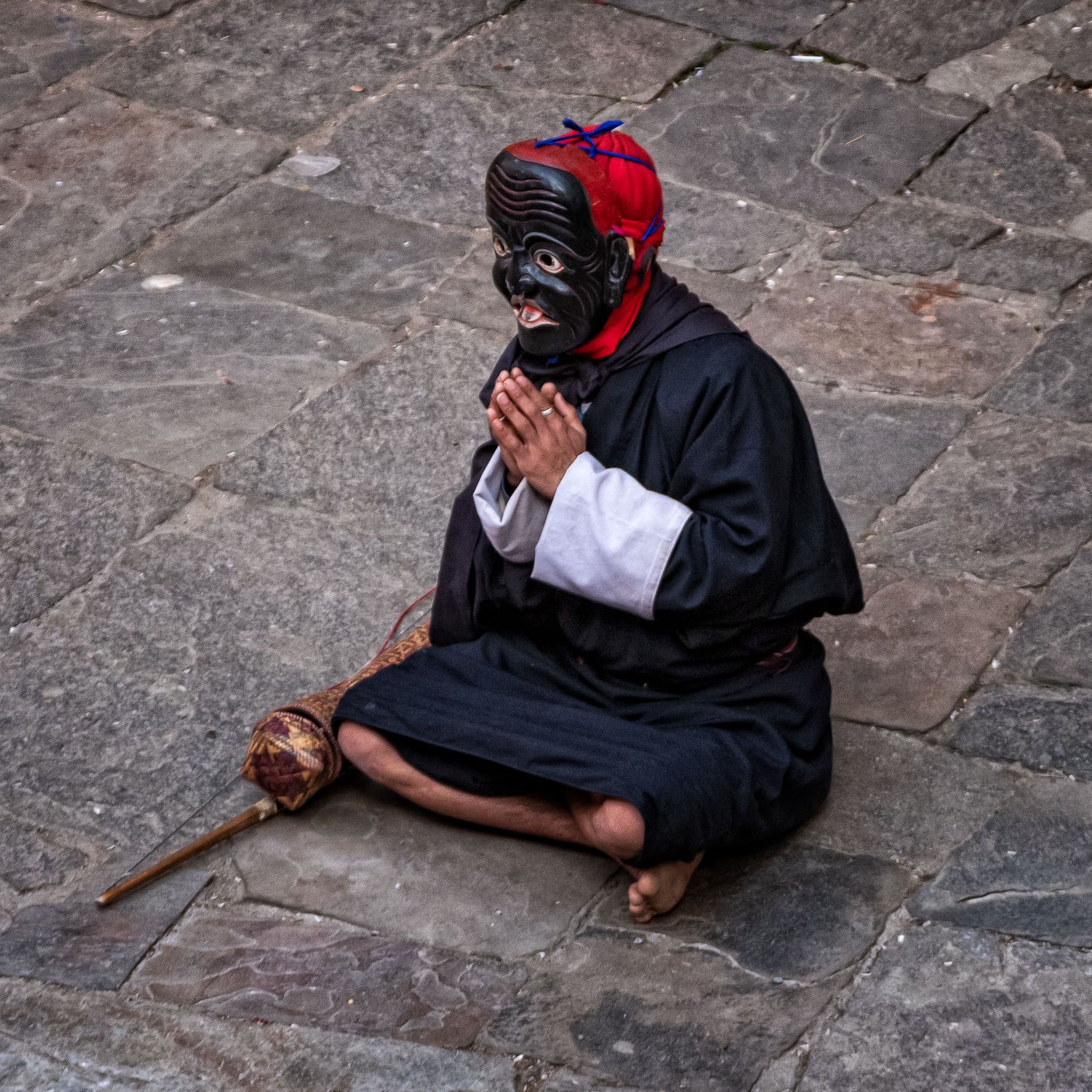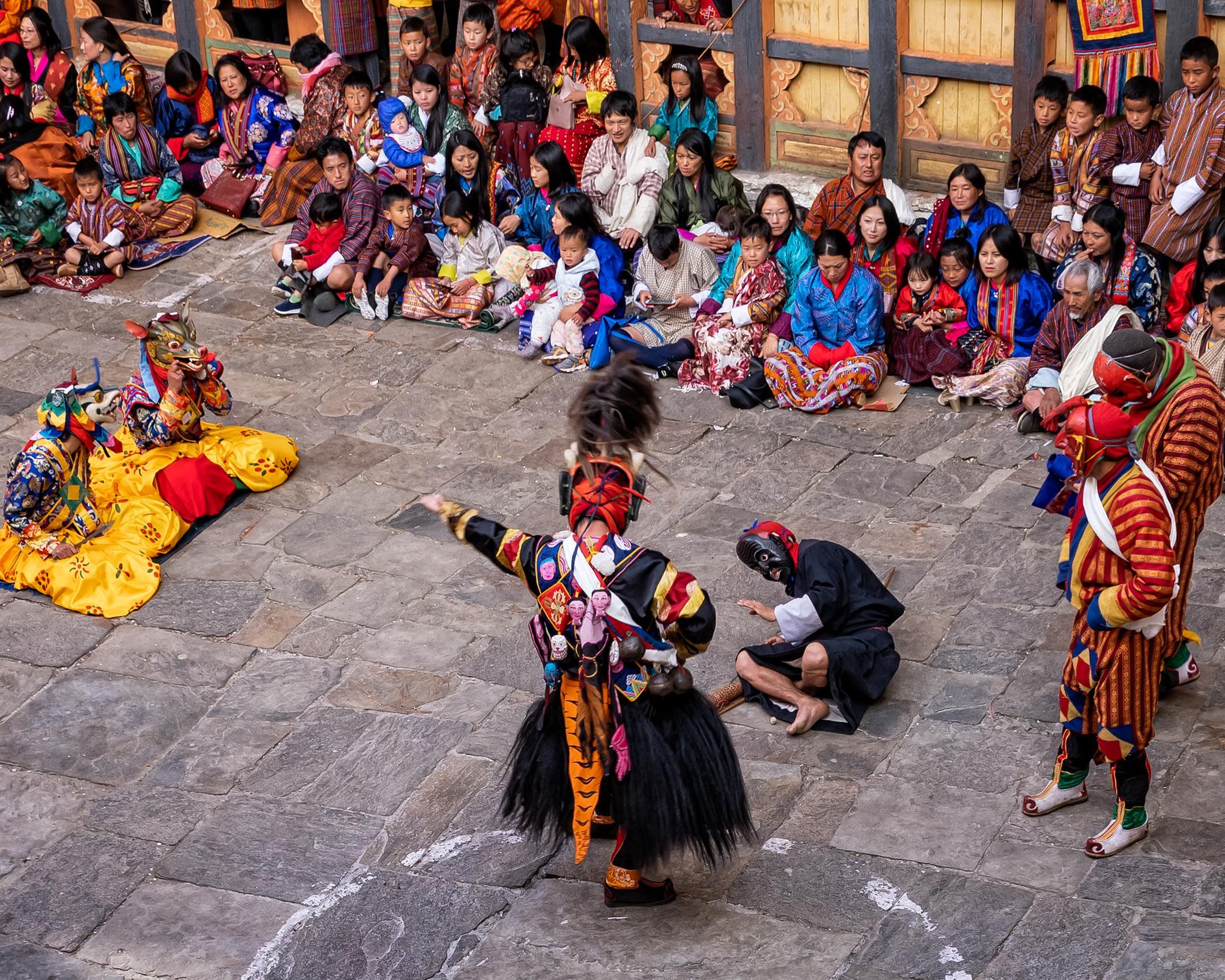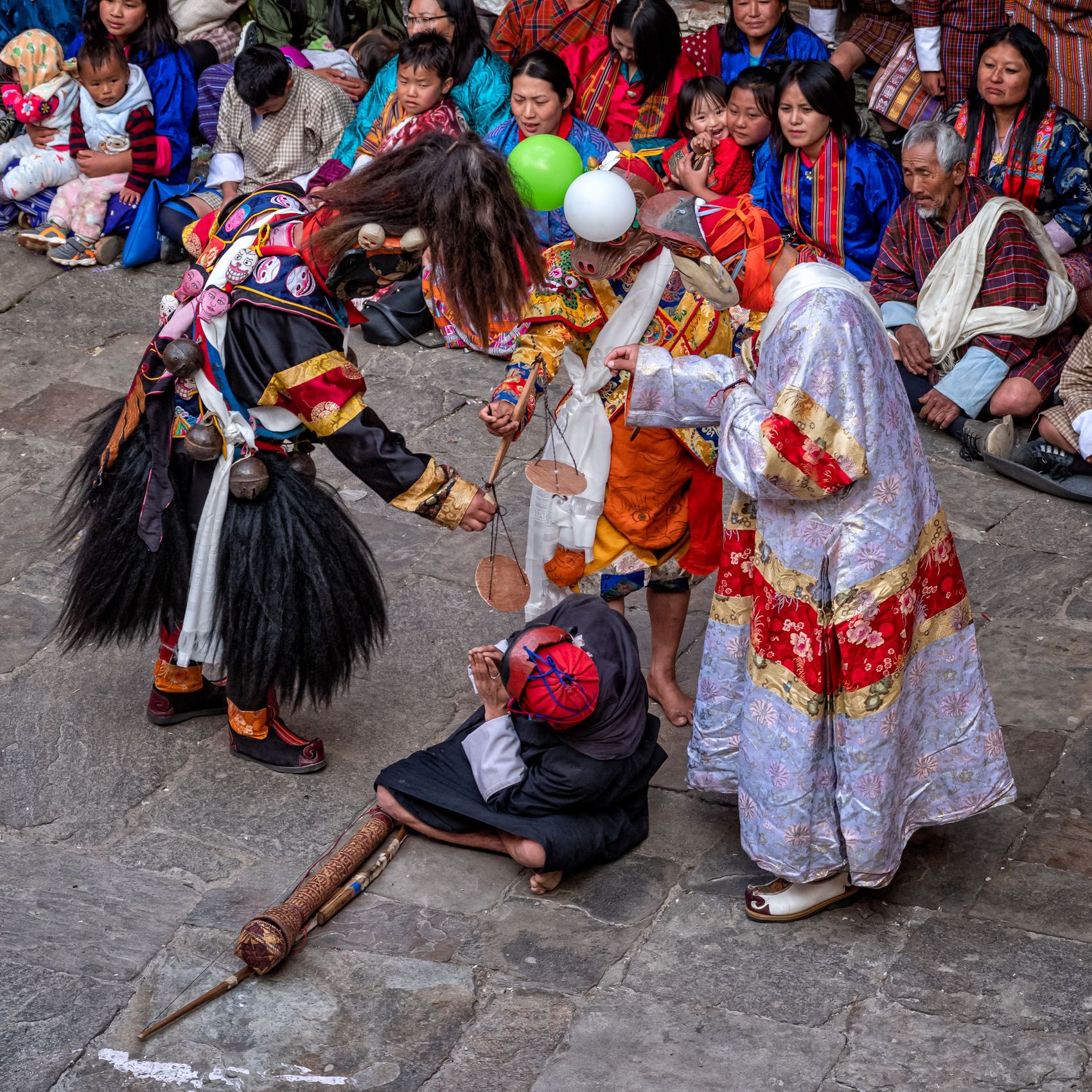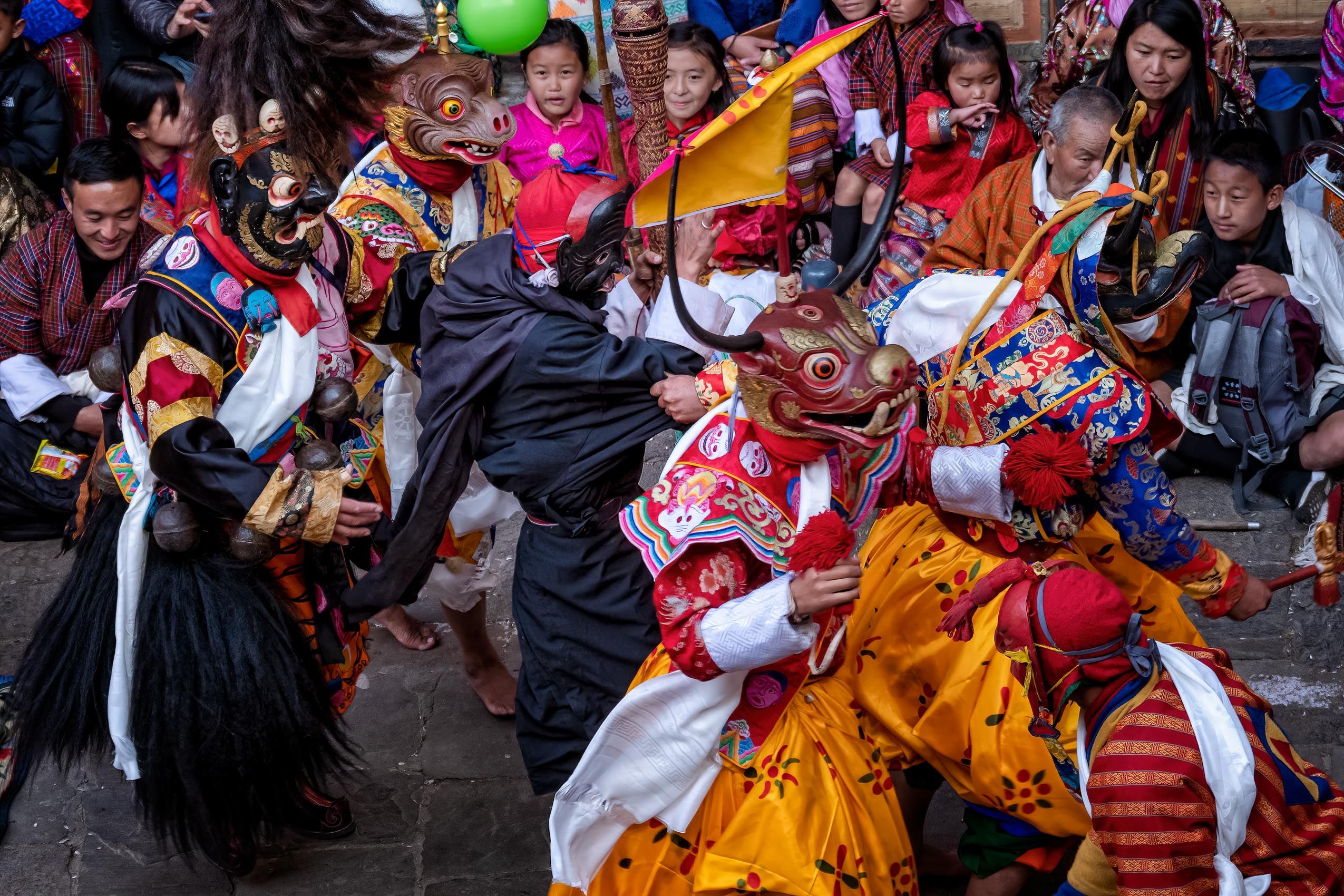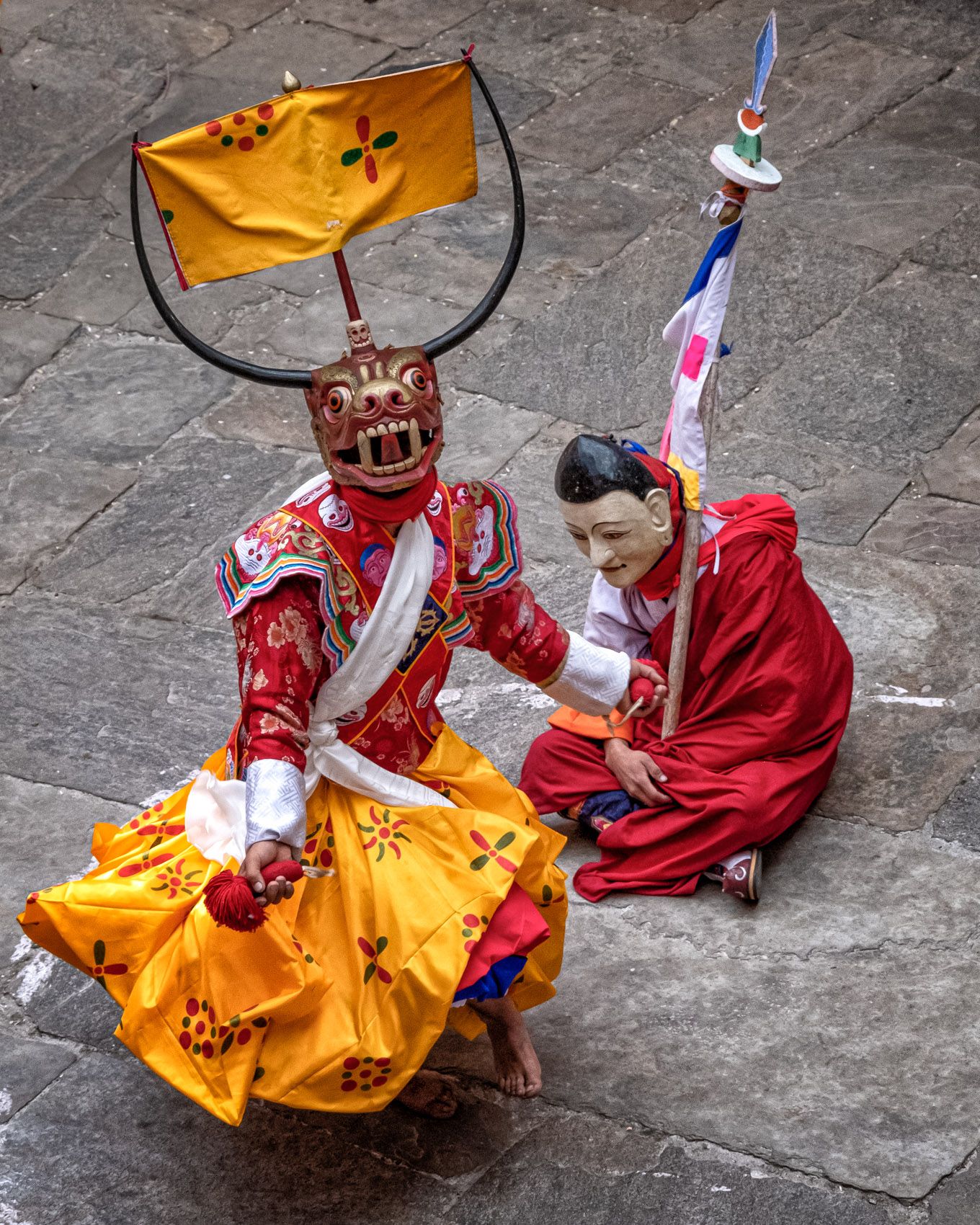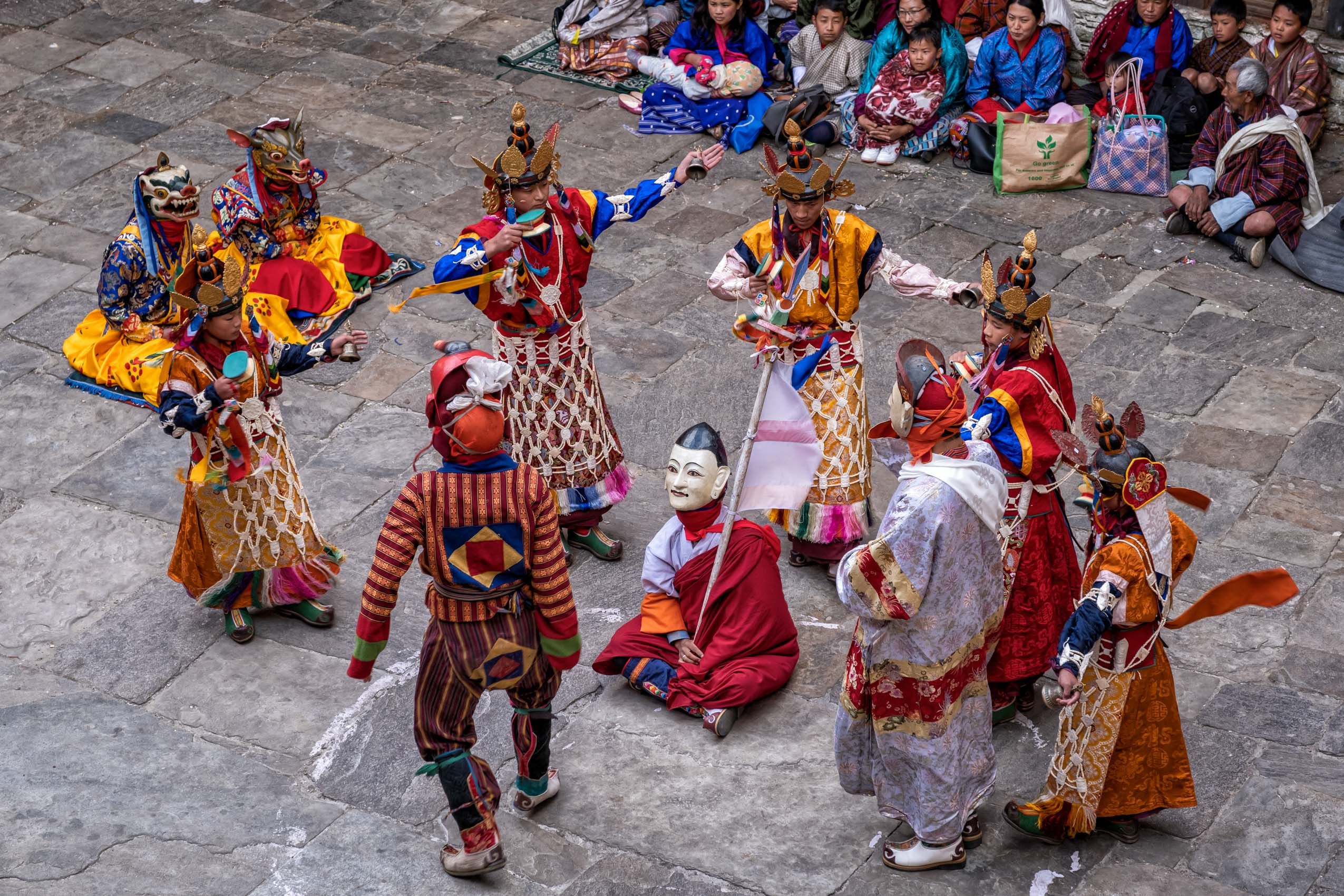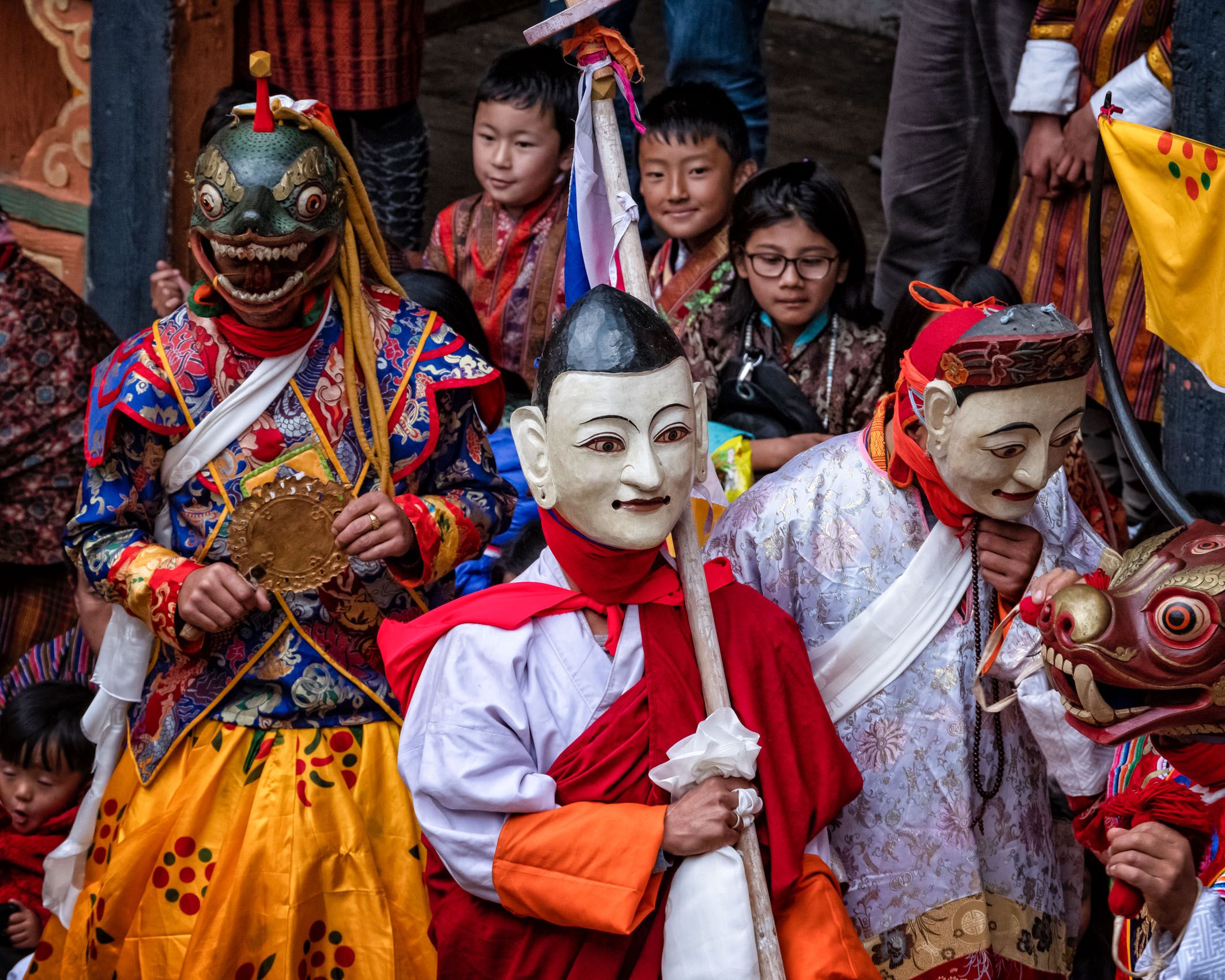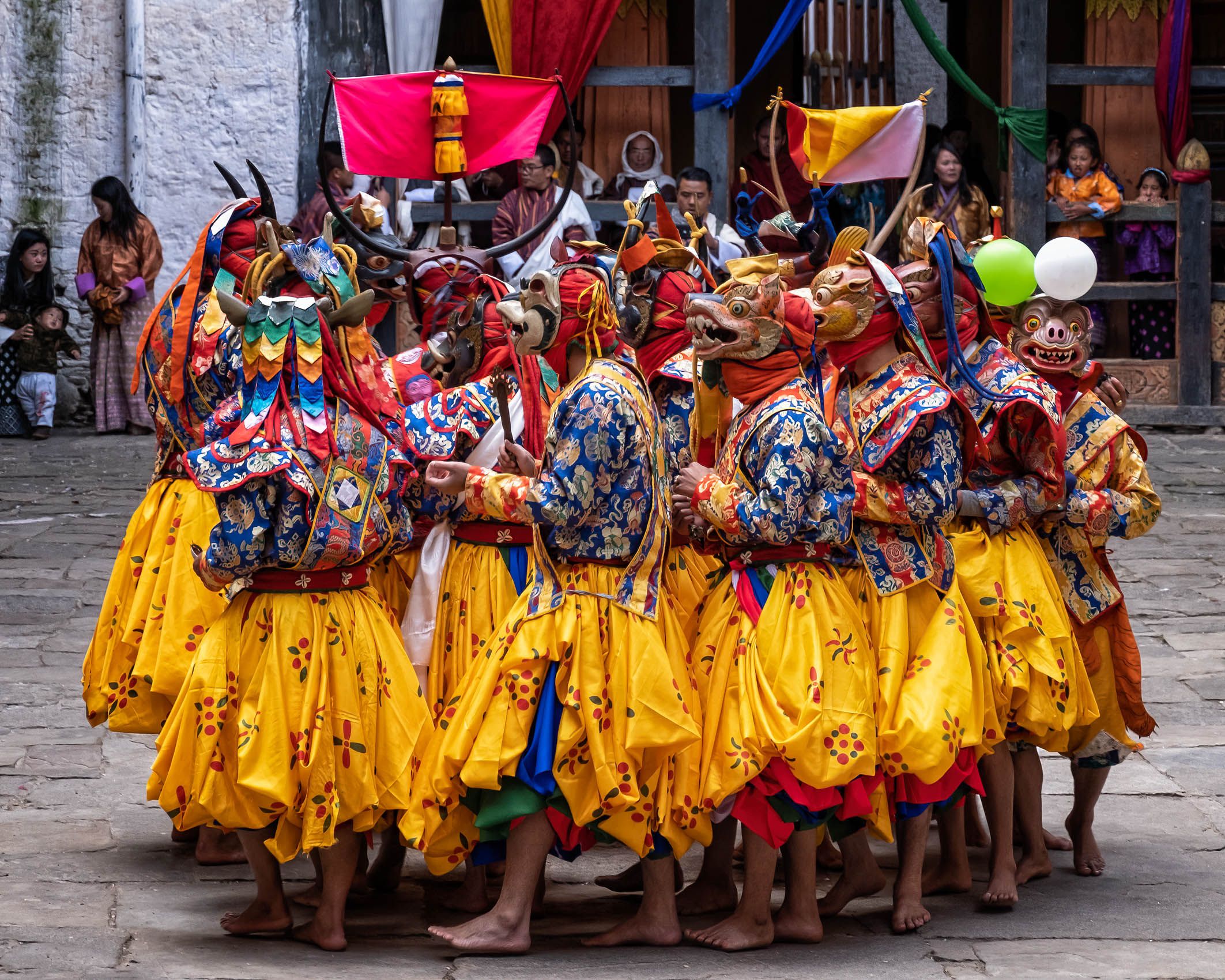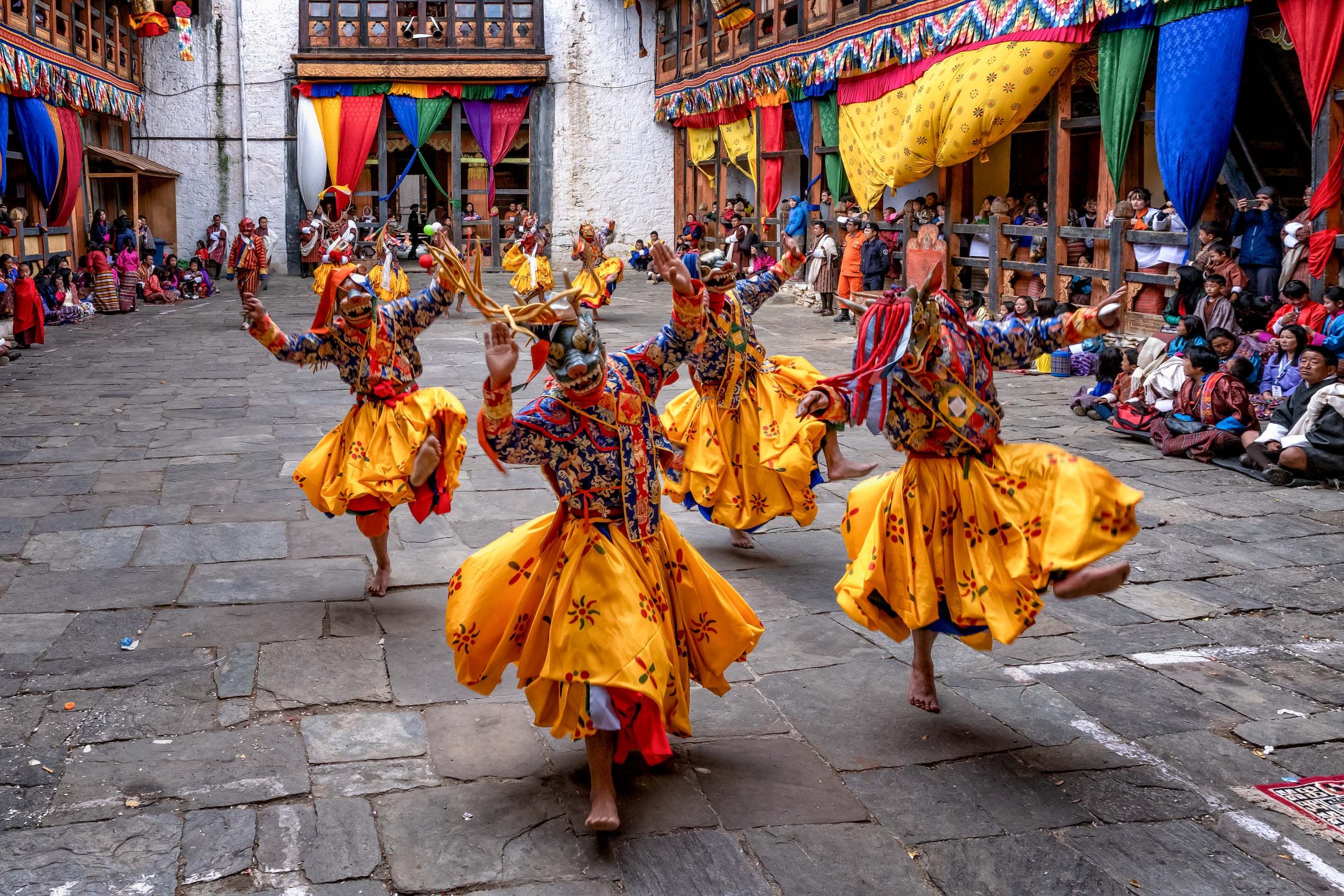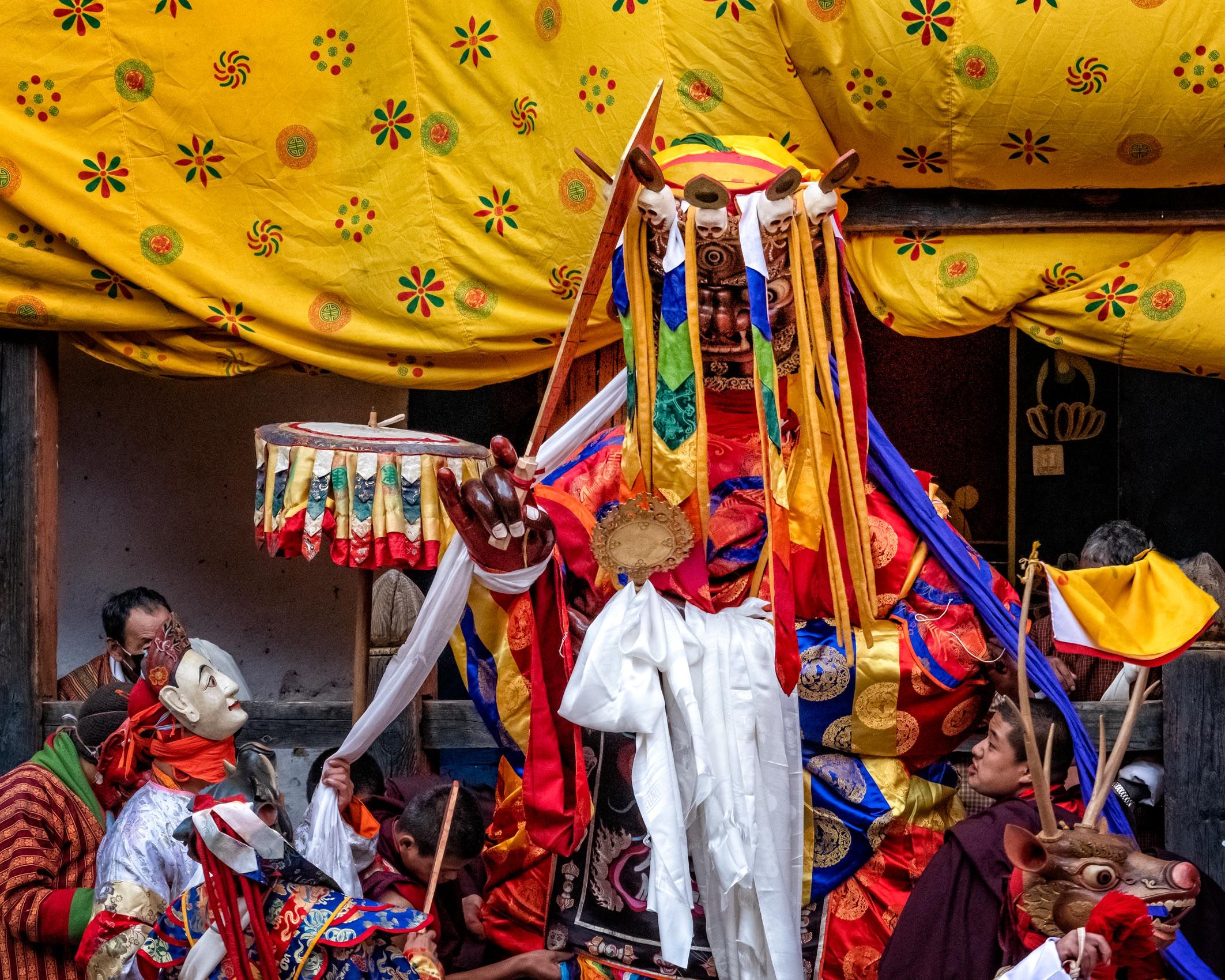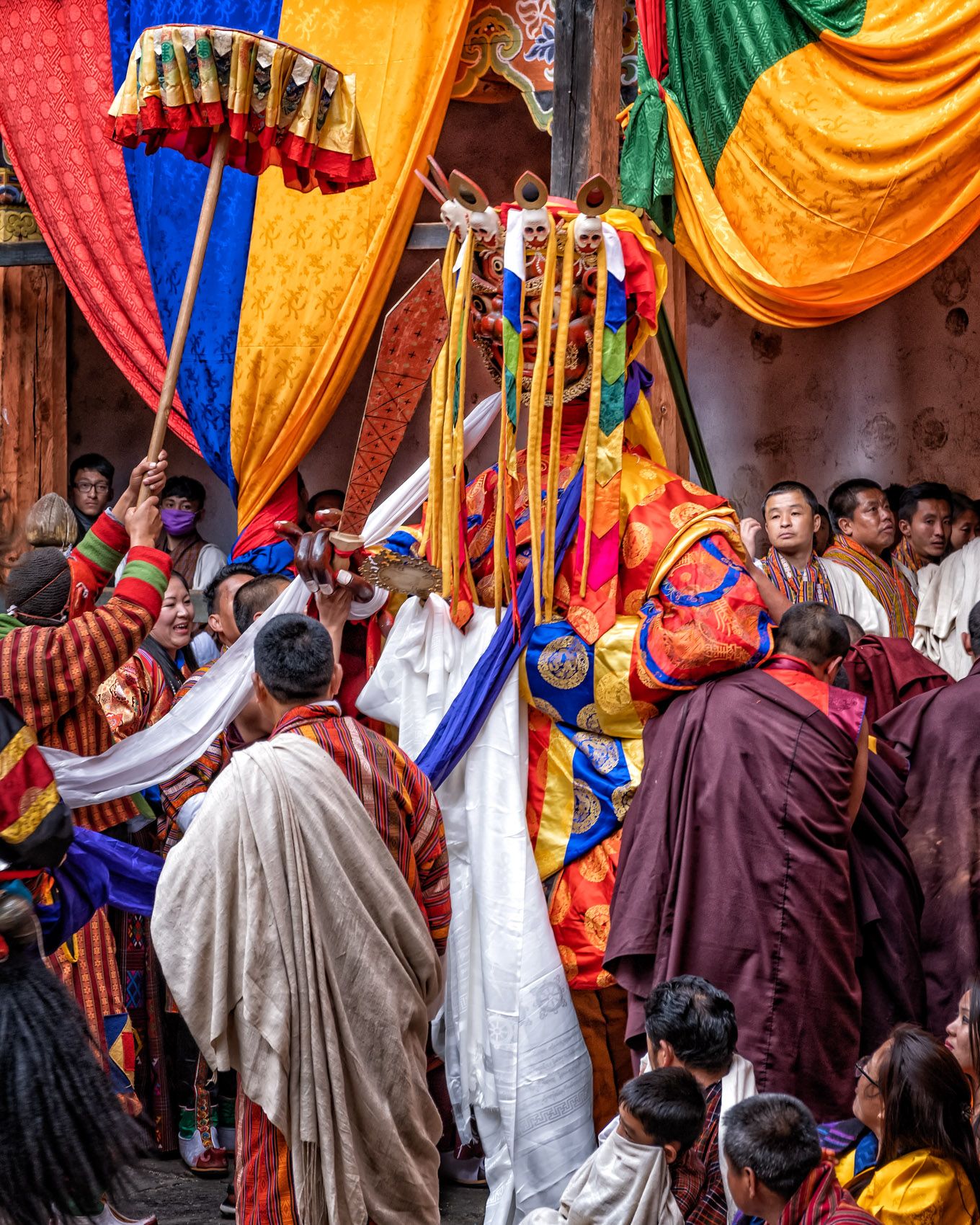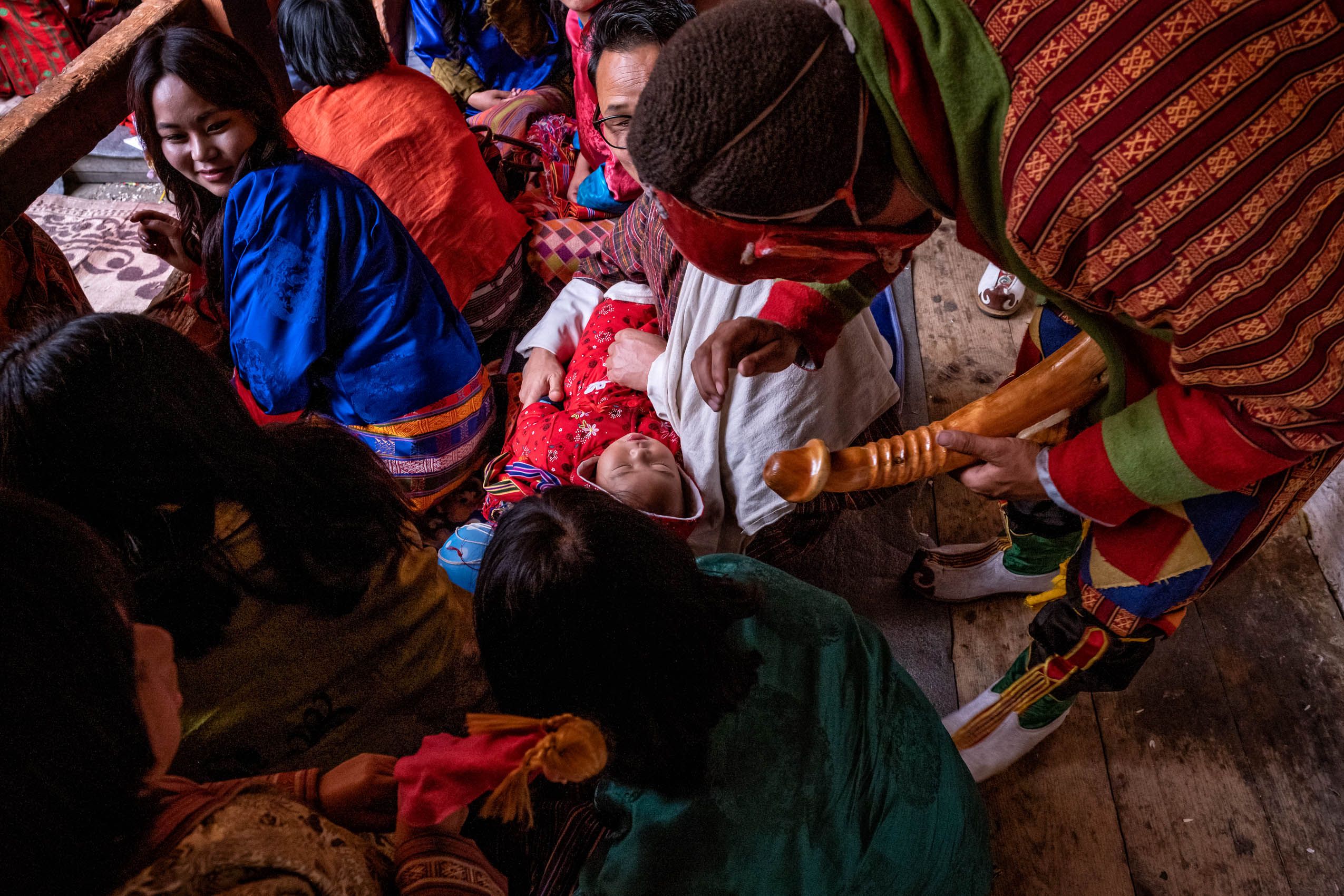BHUTAN: Bumthang’s Jakar Tshechu (2019)
Tshechus are festivals dedicated to Padmasambhava (aka Guru Rinpoche), the quasi-legendary Buddhist master who brought the religion to Bhutan in the eighth century and is credited with many extraordinary feats in subduing local demons there. These multi-day festivals, first established in the seventeenth century, are held at Buddhist monasteries across Bhutan annually and constitute a social and religious highlight of the calendar for both the resident monks and the lay people of the surrounding area. Rituals are performed in the temples and masked dances are performed in public spaces for the entertainment and enlightenment of the people. The dancers, usually monastics but also sometimes lay people, wear brilliantly colored and decorated robes and spectacular masks of benign and malevolent spirits and animals. Accompanied by music, the dances are elaborately choreographed and make considerable physical demands on the performers, who must move and leap gracefully for long periods in heavy robes and headdresses, while barefoot or wearing thin soft boots on rough, cold stones.
This portfolio documents two days at the annual tschechu at the Jakar Dzong in the Bumthang district of central Bhutan. Dzongs are massive, strategically sited fortresses, usually dating from the 17th century, containing courtyards, government offices, temples and monastic living quarters, and that continue today to serve as district centers of religious, administrative and civic life. I have sought to capture not only the beauty and vigor of the dances but also interactions among performers and the lay audience, moments behind the scenes in the dressing room, and the omnipresent antics of the artsaras or clowns—assistants, entertainers, fertility figures, who instruct through play and jest. Among the traditional tshechu dances performed during this festival, the Black Hat Drum Dance, the Dance of the Terrifying Deities, the Wrathful War Dance, the Dance of the Stag and Hounds, and the Dance of the Lords of the Cremation Grounds are all elaborately choreographed allegorical representations of the forces of Buddhist doctrine, often taking wrathful and terrifying form in order to subdue the powerful negative forces that seek to obstruct or subvert spiritual truths and the pursuit of virtue. The long and dramatic Dance of the Judgment of the Dead, based on the Book of the Dead, is situated in the bardo or state between death and rebirth, and enacts judgments passed by the Lord of Death upon a hunter who has lived a sinful life and a householder who has followed a life of virtue. Thus, the whole festival is designed as an entertainment that uses all the resources of dance, costume, music, drama and comedy to vividly inculcate religious doctrine and provide spiritual guidance to its audience.

